Tiananmen Square
Forbidden City
Best Restaurants
Foods to Try
Nightlife in Beijing
Best Time to Visit
Weather & Climate
Beijing Airport Guide
Top Neighborhoods
Getting Around
Three-Day Itinerary
Things to Do
Shopping Streets
Great Wall of China

A Complete Guide to Visiting the Great Wall of China
bjdlzx / Getty Images
- How to Visit
Huanghuacheng
Jinshanling, tour or solo, how long to spend, where to stay.
The Great Wall of China stretches 13,000 miles over mountains, forests, reservoirs, and desert. It took a millennium to build, involved multiple dynasties, and pissed off a lot of Huns. Inextricably tied to the history of the country, to visit China without seeing it would cause you to be remiss not only with your friends and family at your homecoming, but somehow within yourself as well. To stand on its ramparts gives one simultaneously a sense of experiencing something collectively epic and individually infinitesimal.
Before you visit, decide if you want to go to an unrestored section, wild section or both. (“Wild” is a popular way to refer to the unrestored sections of the wall.) Consider physical ability and whom you’re traveling with (old people, kids, your sister who hates walking) when choosing a section.
This will be a workout. It’s not strolling on an elevated side walk. The Great Wall is stone waves steep and undulating. Grab your hiking boots and prepare for the walk of a lifetime.
How to Visit the Great Wall
Most visitors go to the Great Wall as part of a half or full day trip from Beijing. Visitors can choose from over 12 well-known sections and access them through a group tour, private driver, private tour, public transportation (sometimes combined with taxis), or by driving their own car. While the travel time from Beijing varies depending on section and traffic, it can take anywhere from one to three hours to get to there.
Worthwhile sections to visit in other provinces are the famous packed-earth Jiayuguan section in Jiayuguan, Gansu Province. It's a mere 4 miles (6 kilometers) from the city and easily accessible by public transport or a short taxi ride. Also, Ningxia Province’s Sanguankou section with its three passes is about 25 miles (40 kilometers) from the province's capital city of Yinchuan. It can be reached by hiring a private car.
If you want to hire a tour operator for a section near Beijing, Beijing Wonder Tour has affordable rates and English-speaking guides. Beijing Hiker’s offers hiking tours to the wild wall. If you want to hire a private car with an English-speaking driver but explore the wall on your own, you can choose from a number of options here . If you want to hire your own car, Hertz rents cars from the Beijing airport.
Best Parts of the Great Wall
The Great Wall spans nine provinces. The sections most commonly recommended are all close to Beijing. However, for less touristy and wilder parts of the wall, you can head to Gansu, Ningxia, or several other provinces less frequented by visitors. All of the ones listed below can be accessed from Beijing.
Popular among foreign tourists and easily accessible from Beijing, Mutianyu offers a well-restored wall with 23 watchtowers, replete with photo ops and views of the surrounding mountains and forests. You can hike, take a chair lift or cable car to the top, and toboggan down. It takes about two hours to walk the 1.4 miles of this section. If you go beyond tower 23, the wall is not restored, has no guardrails, and tourists are responsible for their own safety.
To get there hire a private driver or take the subway to Dongzhimen station. Walk upstairs to the North Bound Platform. Take the Express Bus 916 towards Huairou. After about an hour, get off at the Beidajie stop. Take bus H23 to Mutainyu or share a car with other tourists going there. Travel time is two to two and a half hours.
Simatai's main draw is night tours. Though Badaling is also open at night, Simatai has more ambient lighting and fewer crowds. You can take the cable car up and walk this 3-mile section for about one and half to two hours. Be aware that its grade increases rapidly (from 968 to 3,235 feet) and is super steep. The Simatai wall cuts through the Simatai Reservoir, and those who want to can zipline over it. For the day hikers, Heavenly Ladder and Sky Bridge are two extremely narrow and high parts of the wall with incredible views of mountain ridges.
To get there hire a private driver, or hop on the Airport Express subway line to Dongzhimen station. Take Bus 980 from Dongzhimen Long Distance Bus Station to Miyun Town and then take a taxi.
This section's surrounding countryside boasts a sea of yellow flowers in spring and summer. Other distinguishing features of Huanghuacheng include: boat rides on Haoming Lake, and fewer crowds than Mutianyu and Badaling. It can also be combined with Mutianyu for a day trip, as the two sections are only a 40-minute drive apart.
To get there hire a private car, or take the 916 bus or 916 express bus to Dongzhimen to Huairou Bus Station. Hop on the H21 bus to the Small West Lake (Lakeside Great Wall) Station, and walk north to the scenic area. By public transport, it will take at least two hours from central Beijing.
For those who can’t decide if they want to see a restored or wild section of wall, Jinshanling offers a beautiful mixture of both. Ideal for hikers, this section stretches 6.5 miles, runs along the Jinshanling Mountains, contains 67 watchtowers, five mountain passes, and very few tourists. If you hike in this section by itself, plan for two to five hours. You can also hike from this section to other sections, such as Simatai or Gubeikou.
To get there, hire a private driver or take the subway to Wangjing West Station. Hop on the bus to Luanping, and get off at Jinshanling Service Area. This bus will take about two hours to get to Jinshanling Service Area. Once you alight, you can take a free shuttle to the wall.
If you want to see the section of the wall closest to Beijing and can handle huge crowds, this will be your option. Though super touristy, Badaling has amazingly restored wide walkways and guardrails for its steeper parts. Like the Mutianyu section, it offers a cable car and toboggan rides for those who want to save their energy and feet. Plan for one and a half hours to visit this section of the Wall and walk the 2.3 miles of its restored path. Check out the 19 watchtowers along the way and be prepared for tons of hawkers.
To get there hire a private driver or take the subway to Jishuitan station. Go out exit B2 and hop on the 877 bus, a direct bus with a travel time of about one and a half hours to get there.
Tips for Visiting the Great Wall
Use these tips to make the most of your visit.
You do not need to book a tour to the Great Wall, though it can eliminate the stress of trip planning and language barriers. If you are traveling solo or with one or two other adults, hiring a driver or using public transport will most likely be your best options.
If you are traveling in a large group or with children or with elderly family members, a tour or private driver will be your best options. Some tours will take you to a government sponsored tea house or jade museum during the trip. Know what you’re buying if you go the tour route, and look for tours that state they do not do commissioned stops.
Weather-wise, spring and fall are the best times to see the Great Wall. Spring will provide beautiful verdant greens (and yellow blossoms around Huanghuacheng). In the fall, the rolling forested hills on either side of the wall will be dappled with red, orange, and yellow leaves. However, the best time to go to avoid crowds is winter.
Wear layers. It gets windy and most of the sections are exposed. Even the watchtowers have giant open window frames. If you go in the summer, take a hat and sunscreen.
Spend at least three to four hours on the wall, this is one of the Seven Wonders of the World and a UNESCO World Heritage site after all. Take some time to enjoy it. Sections can be steep (even if restored) and ascents slow. Stroll through the blockhouses and watch towers, sip water as you admire the surrounding hills, and zip down to the base in a toboggan (if you go to Badaling or Mutianyu).
If you want to experience the Great Wall early without leaving Beijing in the wee morning hours, consider staying at a hotel by the section you want to see. For Muitanyu, The Brickyard offers comfortable rooms, a restaurant, and a spa. Alternatively, if you want to go to the wall during the day, but also see it lit up at night, go to Simatai. Stay at Gubeishui Town Hotel and splurge on a luxury room with great views.
For intrepid explorers, it is possible to camp on the wall. However, you will need to do your own research and take all of your gear and provisions with you. There are no vendors in the wild sections. If you want to camp in a group tour, Great Wall Hiking offers what is sure to be a memorable experience of a night on the Great Wall.
The 12 Best Day Trips from Beijing
Getting To and From LaGuardia Airport in NYC
Visitor's Guide to the Terracotta Warriors Museum in Xi'an
3 Days in Beijing: The Ultimate Itinerary
Beijing Guide: Planning Your Trip
A Guide to Airports in Beijing
The Top 19 Things to Do in Beijing
Interesting Facts About the Great Wall of China
How to Visit Los Angeles Without a Car
How to Travel From Cancun to Cozumel by Bus, Car, Ferry, and Plane
The Most Crowded Places in China
How to Travel from Phoenix to Sedona by Bus, Shuttle, and Car
Great Activities for Kids Visiting China
The 10 Best Hikes in China
Your Trip to the Amalfi Coast: The Complete Guide
How to Travel from Amsterdam Airport to City Center by Train, Taxi, Bus, and Shuttle
- Find a Tour
- China Tours
- Student Tours
- MICE Travel
- Destinations
- Virtual Tours
Great Wall of China

- Travel Guide
- Private Tours
- Sights & Activities
As China's most famous attraction, the Great Wall of China is an essential stop on all China tours . Commonly considered a wonder of the world, the Great Wall boasts a history of over 2,000 years and stretches more than 3,000 miles across several provinces of northern China, making it one of the most impressive ancient structures on the planet.
Virtual Tour of the Great Wall of China
Want to visit the great wall of china spontaneously with a professional live guide learn more about our guided virtual tour here, best sections to visit.
Beijing is usually considered the main gateway to the Great Wall, since there are several world-famous sections of the Wall in the suburbs of Beijing, including Badaling, Mutianyu, Jinshanling, Juyongguan, Gubeikou, and Jiankou. These sections were built during the Ming dynasty between the 14th and 17th centuries and have been well preserved.
Of all the sections of the Great Wall near Beijing, Badaling is the most famous one. As a result, Badaling is the destination of choice for many large tour groups and is often very crowded. The nearby Juyongguan Great Wall features one of the three great mountain passes of the Great Wall but is almost as crowded as Badaling.
Mutianyu Great Wall is just as close as Badaling and offers wonderful views of the Great Wall and the surrounding hills with far fewer tourists. This section of the Wall also features a thrilling toboggan run that you can ride from the top of the Wall down to the bottom of the hill.
Due to their proximity, Badaling, Juyongguan, and Mutianyu are all doable as a half-day trip from downtown Beijing. We usually recommend Mutianyu over Badaling or Juyongguan , since the massive crowds at the latter two sections can ruin one's experience of this impressive structure.
Further away from Beijing, Jinshanling Great Wall is about 150 km northeast of downtown and it usually takes about two and a half hours to drive there. Despite the longer drive, Jinshanling is among the most stunning sections of the Great Wall. If your itinerary allows for one full day seeing the Great Wall, then we highly recommend a tour to Jinshanling.
Gubeikou and Jiankou can also be visited within a day tour from Beijing . Both sections have not been restored since they were first built in the Ming Dynasty, making them ideal choices for those who want to hike and experience the wild Great Wall. Do be aware that the Jiankou section features very steep and dangerous climbs and is only suitable for experienced hikers.
There are also some other famous sections of the Great Wall within or outside Beijing, such as Huanghuacheng, Simatai, and Shanhaiguan, but we only recommend these if you are visiting the Great Wall for a second time or planning a multi-day, in-depth Great Wall tour.
Great Wall Hiking and Camping
Due to its original purpose as a military defense, almost all sections of Great Wall were built on mountain ranges and thus involve some challenging climbs and uneven stairs, including the well-restored sections. If you are visiting a restored section but hike to the end of the renovated part, you will be able to see the unrestored part of the Great Wall.
For most visitors, Mutianyu and Jinshanling offer good, medium difficulty hikes, while still being very safe. For those looking for a serious hike along wild, unrestored portions of the Wall, we suggest the Jinshanling to Jinshanling East , or Gubeikou to Jinshanling routes. All these routes boast both unrestored and picturesque renovated sections of the Wall. However, please be aware that hikes along wild, unrestored parts of the Great Wall involve many steep climbs and loose bricks, and can be very dangerous in some places. (People can no longer hike through from Jinshanling to Simatai since the route was closed years ago.)
Camping on the Great Wall is usually banned, especially on the renovated sections. If you want to spend a night sleeping on the Great Wall , we can take you to a watchtower on the Gubeikou section of the Great Wall to experience the life of an ancient soldier and catch amazing sunrise/sunset views over the Wall.
Best Time to Visit
For all sections of the Great Wall near Beijing, the spring months (April to June) offer temperate weather and are great for climbing. In late April to early May, many trees begin to blossom, making this a particularly beautiful period to visit the Wall. Fall is also a nice time to visit, as temperatures are usually comfortable. October to early November are particularly picturesque, as the tree leaves on the mountains begin to change color. The winter months, from December to February, are cold and can be windy, but there are usually far fewer tourists on the Wall during these months. July and August are hot and humid, and thus not the best for long hikes. In addition, it's best to avoid hiking on the Wall after rain or snowfall because some parts can get very slippery.
You should also avoid visiting the popular sections, such as Badaling, Juyongguan, and Mutianyu, around National Day (the first week in October) and Spring Festival. August is also a busy time for the Badaling and Juyongguan sections, since students are on summer vacation and many families travel to these famous sections with their kids before the new school year starts. Learn more about how to avoid the crowds when traveling in China .
Great Wall of China Private Tour Packages
- Beijing and the Great Wall Day Tour
- 2 days Beijing highlight tour
- 3 days Beijing tour
- Golden Triangle of China - 9 days Beijing, Xian, Shanghai tour
- The Classic China Tour - 13 days Beijing, Xian, Guilin, Yangshuo, Shanghai tour
- The Ancient Capitals - 5 days Beijing, Xian tour
- Tale of Two Cities - 5 days Beijing, Shanghai tour
- More Great Wall tours...
Customize a tour that includes a visit to this destination
Inquiry form.
- Search Please fill out this field.
- Manage Your Subscription
- Give a Gift Subscription
- Sweepstakes
- Travel Tips
17 Facts About the Great Wall of China You Should Know
The Great Wall of China inspires wonder among its millions of visitors each year. Read on to learn about its unique history and how to visit.
Melanie Lieberman is the senior travel editor at The Points Guy and was an editor at Travel + Leisure.
:max_bytes(150000):strip_icc():format(webp)/Melanie-Lieberman-49e4798f0cbc434e8bb59f20e01adab4.jpeg)
Like a writhing dragon’s tail, the Great Wall of China snakes its way across China’s northern border. As its name suggests, the Great Wall is an imposing architectural marvel, and it’s often hailed as one of the greatest manmade wonders of the world. The Great Wall of China’s history stretches back more than 2,000 years. Despite its cultural and historic importance, it wasn’t until 1987 that the Great Wall of China was listed as a World Heritage site by UNESCO.
But the Great Wall isn’t even a single wall.
“The first thing to note,” travel expert Stan Godwyn told Travel + Leisure , “is that it’s actually a series of walls and fortifications.”
Godwyn typically arranges for clients to visit one of four main sections — Badaling (the most accessible for travelers of varying mobility), Mutianyu (extremely popular and well-restored), Simatai (a crumbling, rugged stretch of wall), and Jinshanling (for serious hikers).
Want to discover more Great Wall of China facts and bits of history? Read on for our definitive guide to this world wonder and ancient marvel.
Where Is the Great Wall of China?
The Great Wall of China is easily accessible from Beijing, though the massive structure stretches from Shanhaiguan in the east all the way to the city of Jiayuguan, in the country’s northwest. Generally speaking, the Great Wall of China defends the country’s northernmost border. A 2012 archeological survey estimated that the wall (taking into account all the dynasties that had worked on the structure) crosses 15 provinces and extends from Xinjiang, in the northwest, to the border of Korea in the east.
How Long Is the Great Wall of China?
If you were to measure all the sections ever built, some reports suggest the Great Wall of China could be a staggering 13,170 miles long. The most popular (and arguably the most beautiful) section was erected during the Ming dynasty, and runs for 5,500 miles between Hushan to the Jiayuguan Pass. Even if you only take into consideration the main-line length (about 2,150 miles) of the wall — not including branches and spurs — it’s still the record-holding longest wall in the world .
For those wondering how tall the Great Wall of China is, the general answer is that the structure’s height varies considerably, from 15 feet all the way to 39 feet. At its widest point, the wall is 32 feet thick.
When Was the Great Wall of China Built?
It’s hard to say precisely when the Great Wall of China was built, as so many dynasties and rulers contributed to its construction. Some 20 states and dynasties contributed to the construction of the Great Wall of China over the course of millennia. It’s thought that the first lengths of the wall were built as early as 771 B.C.E., though official work didn’t begin until 220 B.C.E., during the reign of Emperor Qin Shi Huang. Most of what remains today — that 5,500-mile stretch — was built during the Ming dynasty (between 1368 and 1644).
Why Was the Great Wall of China Built?
Originally built as a wartime defense, the Great Wall of China features many towers and passes. When Emperor Qin Shi Huang first proposed the so-called Long Wall, it was meant to defend the Chinese states against nomadic tribes from the north.
During the Han dynasty, (between 202 B.C.E. and 220 C.E.) the Great Wall was extended to protect the Silk Road trade. The Ming dynasty is known for not only extending the Great Wall, but also repairing and reinforcing existing structures.
How Was the Great Wall of China Built?
Despite its name, the Great Wall is actually a collection of fortifications, some of which run parallel to one another, while others are circular or side walls. There are even portions of the Great Wall that are natural barriers, like rivers or high mountains.
Hundreds of years before any official construction on the Great Wall began, individual Chinese states built fortifications against one another, using mostly earth, wood, and stones. Construction during the Ming dynasty made use of bricks rather than cut stone, which appears largely in the foundation and gateways.
More than a million soldiers, commoners, prisoners, and animals were recruited to help build the wall. Hundreds of thousands of men died while working on the wall, which required them to carry heavy materials on their backs up to the top of the ridgelines. There are rumors that many of the dead were buried in the wall, though to date there's no hard evidence of this.
Much of the work on the oldest sections of the Great Wall were built by hand, though primitive technology — wheel barrows, ropes, basket-and-pulley systems, and horse- or oxen-drawn carts — was also used.
When Is the Best Time to Visit the Great Wall of China?
The most popular times to visit the Great Wall of China are early May or October — but travelers should expect massive crowds during these periods.
“These are major holidays and everyone travels,” explained Godwyn.
Autumn is arguably one of the most popular and beautiful times to visit the Great Wall of China. Weather is comfortable and dry, and the mountains’ foliage is a kaleidoscopic array of hues.
During the winter, the Great Wall of China is blanketed in snow — and the number of tourists will drop dramatically. Winter is Beijing's shoulder season, so you will enjoy serious deals and discounts on hotel rooms and tours. If you do make a winter trip, be prepared for a slippery, windy walk, and pack accordingly.
Can You See the Great Wall of China From Space?
Contrary to popular rumor, you can’t see the Great Wall of China from space with the naked eye. As NASA reported , however, photographs taken from the International Space Station under ideal conditions have depicted sections of the wall.
How Many People Visit the Great Wall of China?
Every year, more than 10 million people flock to the Great Wall of China, making it one of the world’s most popular tourist attractions. The Badaling section sees the most visitors each year. It once received 100,000 visitors in one day.
How to Plan Your Visit
The Great Wall of China is a perfect day trip for travelers based in Beijing.
“Most clients do one day at the Great Wall as part of a visit to Beijing,” explained Godwyn. “Typically, we have a day of sightseeing in Beijing — then the second day is an excursion to the wall.”
Pick the part of the wall that best suits your needs and interests. Active, confident hikers should venture to Jinshanling, while families may want to stick with the more accessible Mutianyu section (there’s an unforgettable, five-minute toboggan ride from the top of the eastern end to the bottom).
Check specific fees in advance, but expect to pay around 25 to 65 yuan (under $10) for general admission to the Great Wall.
And don’t rush it. Whether you’re visiting the Great Wall of China on a layover or during a longer trip, we recommend spending at least two or three hours exploring the ancient structure.
Getting to the Great Wall From Beijing
The beautiful Ming dynasty portion of the Great Wall is around 50 miles from Beijing. But getting there can be a bit tricky for travelers making the trek solo.
Visitors sticking with public transportation will first need to get to Dongzhimen Station, where you can take an hour-long express bus ride to Huairou Station. Here, you’ll need to transfer to a bus stopping at the Mutianyu Roundabout.
The Airport Express connects directly from the Beijing Capital International Airport to Dongzhimen Station. Subway lines also transfer to Dongzhimen Station from the Beijing West Railway Station and Beijing South Railway Station.
However, one of the most convenient (and exciting) ways to get there is by taking the train to Badaling Great Wall Railway Station, also known as the world's deepest and largest underground high-speed railway station, which was completed in 2019. There are more than 10 pairs of high speed trains that travel between Beijing and Badaling Great Wall Railway Station, running from Beijing North Railway Station or Qinghe Railway Station.
Many travel experts recommend skipping the train and opting for a hired car and a guide. They’ll be able to take you to less popular sections of the wall and can help navigate unexpected hiccups, such as road closures. A car is also the best way to maximize your time.
Great Wall of China Tour Groups
For a private, luxury tour of the Great Wall, book an itinerary with Imperial Tours . A Beijing day trip with stops at the Forbidden City and less-touristy sections of the Great Wall also includes fine dining experiences.
If you’d like to hike, but would prefer not to go it alone, consider the four-day Great Wall Hiking Tour with China Odyssey Tours . After a day exploring the highlights of Beijing (Tiananmen Square, the Temple of Heaven, etc.) you’ll begin a moderate hike from the Jiankou section to Mutianyu.
Try TravelStore for a personalized trip to the Great Wall of China, which might include a customized Silk Road itinerary with stops in Jiayuguan, a northern Chinese city with restored wall sections and the last fortress of the Great Wall.
Even if you’re only in China for a layover, there’s still plenty of time to see the Great Wall. Every single day, Beijing Layover Tour offers private and small-group tours of the Mutianyu section of the Great Wall, ranging from four to five hours in length. You’ll be picked up at arrivals by a tour guide, and transferred back to the airport after the trip. These tours start at $50 for a private visit to the wall.
Hiking the Great Wall
One of the most popular hikes along the Great Wall snakes from the Jiankou section to the Ox Horn at Mutianyu. Here, unrestored sections of wall switch back and forth along steep mountain passes. Hikers should expect to spend up to four hours each way.
Another good hike covers the section from Jinshanling to Simatai West — a challenging route that covers four miles each way, and passes a series of watchtowers.
Or, start at the Gubeikou section of the Great Wall in Gubeikou Town — approximately 90 miles northeast of Beijing. From these quiet, never-repaired stretches of wall, visitors will find unobstructed views of the Yan Mountains before they descend to the Jinshanling section.
The Great Wall of China Dos and Don’ts
Don’t visit the Great Wall during a holiday. The attraction is popular with tourists, but locals love the site as well. Tomb-Sweeping Day in April, for example, sends claustrophobia-inducing crowds to the country’s most famous sites.
Do consider waiting until the late afternoon to visit the Great Wall, when insiders say many of the early morning and afternoon crowds begin to clear out.
Do pack comfortable walking shoes , and plenty of water.
The Great Wall Has Faced Erosion Concerns Over the Years
After centuries defending dynasties, China’s Great Wall has begun to crumble. Entire sections of the wall have been swallowed by weather and time — and that’s to say nothing of the many wars and manmade afflictions. Chinese state-run media has reported that nearly one-third of the walls have already disappeared. It’s not just slow-moving erosion wreaking havoc on the wall — the site has also succumbed to earthquakes and torrential storms.
The Best Restaurant Near the Great Wall of China
One of the most popular places to eat near the Great Wall is Commune by the Great Wall — a five-star hotel with a restaurant, Commune Kitchen, that serves Peking duck and other regional Chinese cuisine with a dining room that overlooks the Great Wall.
Generally speaking, however, food near the Great Wall is quite expensive and not particularly notable. Travelers should consider venturing into the nearby towns for affordable, authentic meals — or waiting until they’ve returned to Beijing for a seat at a top table.
Laws Protecting the Great Wall
It’s not just the immutable forces of weather and time that have destroyed the Great Wall of China. Alarmingly, 30% of the original structure has disappeared, largely because of mankind’s endless meddling.
In 2006, China passed the Great Wall Protection Ordinance, though the country has struggled to enforce any rules or regulations.
Travelers should note that there are fines for taking bricks or other sections of the wall, and that it’s inadvisable to pay locals for access to less-traveled sections, as this puts even more, unregulated parts of the wall at risk of destruction.
Notable Visitors to the Great Wall
In November of 2009, President Barack Obama visited the Great Wall. He famously said the imposing structure puts life in perspective: “Our time here on Earth is not that long, and we better make the best of it.”
President Obama isn’t the only notable world leader or celebrity to visit the Great Wall. Queen Elizabeth II spent time there in the '80s, while famous athletes like Kobe Bryant, Michael Jordan, and Shaquille O’Neal have also made visits. Celebrities like Beyoncé Knowles-Carter and Jennifer Lawrence have been seen sightseeing at the Great Wall.
National Geographic content straight to your inbox—sign up for our popular newsletters here
- WORLD HERITAGE
See China’s Iconic Great Wall From Above
This is one of the world’s greatest feats of engineering.
China’s iconic Great Wall, actually a network of fortifications rather than a single structure, is the product of countless labors over a period of some two thousand years. Qin Shi Huang took the remnants of truly ancient fortifications, walls, and earthworks begun in the fifth century B.C. and linked them into a unified wall circa 220 B.C. as part of a massive project to protect China against marauding barbarians from the north.
By the time construction on most of the stone-and-brick Great Wall, with its turrets and watchtowers, was completed during the Ming dynasty (1368-1644) the chang cheng had become the world’s largest human-made object.
A recent government mapping project revealed that the entire Great Wall structure spans some 5,500 miles (8,850 kilometers) from the Korean border west into the Gobi desert. Of that total 3,889 miles (6,259 kilometers) were actual wall, while 223 miles (359 kilometers) were trenches and (1,387 miles) 2,232 kilometers were natural defensive barriers, like rivers or steep hills, incorporated into the system.
Though new sections of the wall have recently been uncovered, several sections of the structure have vanished during the past half century or so. Mao Zedong himself encouraged destruction of parts of the wall and reuse of its materials in the 1950s, and rural farmers still make use of the wall’s earth and stone for practical purposes.
Some 50 percent of the original ancient structure has already disappeared, and perhaps another 30 percent lies crumbling into ruins—even as Chinese and international organizations struggle to preserve what remains of this unique treasure.
21 of China's Most Spectacular UNESCO Sites

How to Get There
tourists explore the wall from Beijing. The most popular section (Badaling) is 42 miles (70 kilometers) from the city. This section boasts impressive views, and with crowds come all the modern trappings of development. Those seeking less popular or unrestored sections of the wall have many suitable choices within easy driving distance of Beijing.
The wall has endured centuries of seasons and remains ready to host visitors year round. The Beijing region has icy winters, but the hardy will find far fewer crowds than during the peak summer seasons. Autumn is often delightful near Beijing with mild weather (43° to 64°F/6° to 18°C) and reduced tourist crowds. Wind and dust can be common in springtime. China is a nation of festivals, so consider timing a visit to coincide with a celebration in the shadows of the wall.
- Nat Geo Expeditions
How to Visit
As is appropriate for a monument so massive, there are many ways to visit the wall. Some visitors aspire to admire the views from popular tourist sections, pose for pictures, walk the wall, and take advantage of amenities from restaurants and shops to cable car rides. Others choose to explore rugged sections of the structure on extended hikes and climbs of unrestored “wild wall” sections, though these can be dangerous and are often located in rural areas well off the typical tourist path.
FREE BONUS ISSUE
Related topics.
- WORLD HERITAGE SITES
- ENGINEERING
- ANCIENT CIVILIZATIONS
You May Also Like

See these 6 architectural wonders before they disappear

20 of the coolest travel adventures for 2024

Carthage was Rome’s greatest rival. Go see its side of the story.

This ancient marvel rivaled Rome’s intricate network of roads

See the summer solstice from a Roman emperor’s party cave
- Environment
- Perpetual Planet
- History & Culture
History & Culture
- History Magazine
- Mind, Body, Wonder
- Paid Content
- Terms of Use
- Privacy Policy
- Your US State Privacy Rights
- Children's Online Privacy Policy
- Interest-Based Ads
- About Nielsen Measurement
- Do Not Sell or Share My Personal Information
- Nat Geo Home
- Attend a Live Event
- Book a Trip
- Inspire Your Kids
- Shop Nat Geo
- Visit the D.C. Museum
- Learn About Our Impact
- Support Our Mission
- Advertise With Us
- Customer Service
- Renew Subscription
- Manage Your Subscription
- Work at Nat Geo
- Sign Up for Our Newsletters
- Contribute to Protect the Planet
Copyright © 1996-2015 National Geographic Society Copyright © 2015-2024 National Geographic Partners, LLC. All rights reserved
- 86-19138970032 (GMT+8 18:00~09:00)

- Beijing Xian Tours
- Shanghai Beijing Tours
- Hong Kong Guilin Tours
- Hangzhou Suzhou Tours
- Kunming Lijiang Tours
- Shanghai Yangtze Cruise Tours
- Chengdu Tibet Tours
- More Short Stay Tours
- China Tours in January
- China Tours in February
- China Tours in March
- China Tours in April
- China Tours in May
- China Tours in June
- China Tours in July
- China Tours in August
- China Tours in September
- China Tours in October
- China Tours in November
- China Tours in December

- High Speed Trains
- China Yangtze Cruise Tour
- Photography
- Desert Adventure
- Ethnic Villages
- Biking Tours
- Kung Fu Tours
- Heritage Sites Exploration
- China Spring Tours
- China Summer Tours
- China Autumn Tours
- China Winter Tours
Notice! 2024 available cruise routes include 4~5 days Chongqing-Yichang(most classic) and 11~12 days Chongqing-Yichang-Shanghai(limited).

- Best-value Yangtze Cruises
- Top Family-friendly Cruise Ships
- Top 3 Luxury Yangtze River Cruises
- Yangtze River Highlights
- Yangtze River Cruise Routes
- Upstream or Downstream?
- Dining & Drinking
- Accommodations
- On-board Activities
- Yangtze Cruise Booking Steps

- Inner Mongolia

- Fanjingshan
- How to Plan Your First China Tour
- How to Plan Beijing Tour
- How to Plan Xian Tour
- How to Plan Shanghai Tour
- How to Plan Guilin Tour
- How to Plan Sichuan Tour
- How to Plan Family Tour
- 2024 China Travel Ideas
- Best Time to Visit China
- What to Pack for Your China Journey
- Updated China Travel News
- Ultimate Chinese Visa Guide
- Chinese Visa Types
- Chinese Visa Requirements
- Do I Need a Visa for China
- Chinese Visa Application
- Chinese Visa Exemptions
- 144-hour Visa Free
- Shenzhen Visa on Arrival
- Hainan 30-day Visa Free
- Embassies & Consulates
- Invitation Letter
- Useful Visa FAQs & Tips
- Entry Regulations
- Baggage Allowance
- Customs Declaration
- Exit Regulation
- How to Book Train Tickets
- How to Collect Train Tickets
- How to Cancel & Alter Train Tickets
- How to Read Train Tickets
- China High Speed Train Types
- Seats Class & How to Choose
- Friendly Facilities on the Train
- The Train Station Departure Process
- Available Food and Drinks on the Train
- Western Toilets on the Train
- Luggage Racks & Baggage Allowance
- Beijing Train Stations
- Shanghai Train Stations
- Guilin Train Stations
- Xian Train Stations
- Chengdu Train Stations
- Hong Kong West Kowloon Railway Station
- Beijing - Xian
- Beijing - Shanghai
- Guangzhou - Shanghai
- Shenzhen - Shanghai
- Chengdu - Xian
- Shanghai - Hangzhou
- Shanghai - Xian
- Chengdu - Chongqing
- Kunming - Lijiang
- Beijing Capital International
- Beijing Daxing International
- Shanghai Pudong International
- Shanghai Hongqiao International
- Guangzhou Baiyun International
- Hangzhou Xiaoshan International
- Chengdu Tianfu International
- Chengdu Shuangliu International
- Xian Xianyang International
- Shanghai - Beijing
- Hong Kong - Shanghai
- Guangzhou - Beijing
- Chengdu - Lhasa
- Shanghai - Guilin
- Shanghai - Sanya
- Travel in Spring Season
- Travel in Summer Season
- Travel in Autumn Season
- Travel in Winter Season
- Weather in January
- Weather in February
- Weather in March
- Weather in April
- Weather in May
- Weather in June
- Weather in July
- Weather in August
- Weather in September
- Weather in October
- Weather in November
- Weather in December
- Top 10 China Destinations
- Top 15 Things to Do
- China World Heritage Sites
- Top 10 Best Natural Beauties
- Top 10 Museums in China
- Top 10 Old Towns & Villages
- Five Great Mountains in China
- Top 10 Monasteries & Temples
- Top 10 Ski Resorts
- Top 10 Beautiful Lakes in China
- 7 Best Beaches in Sanya
- Top 6 Beautiful Waterfalls
- Panda Volunteering
- Having fun on Ice and Snow Festival
- About Us Who We Are Our Team Why Travel with Us Feedback & Reviews Travel Stories Travelers' Gallery Payment Guide Customer Support Contact Us
- Tour Experiences
Destinations
- Travel Guide
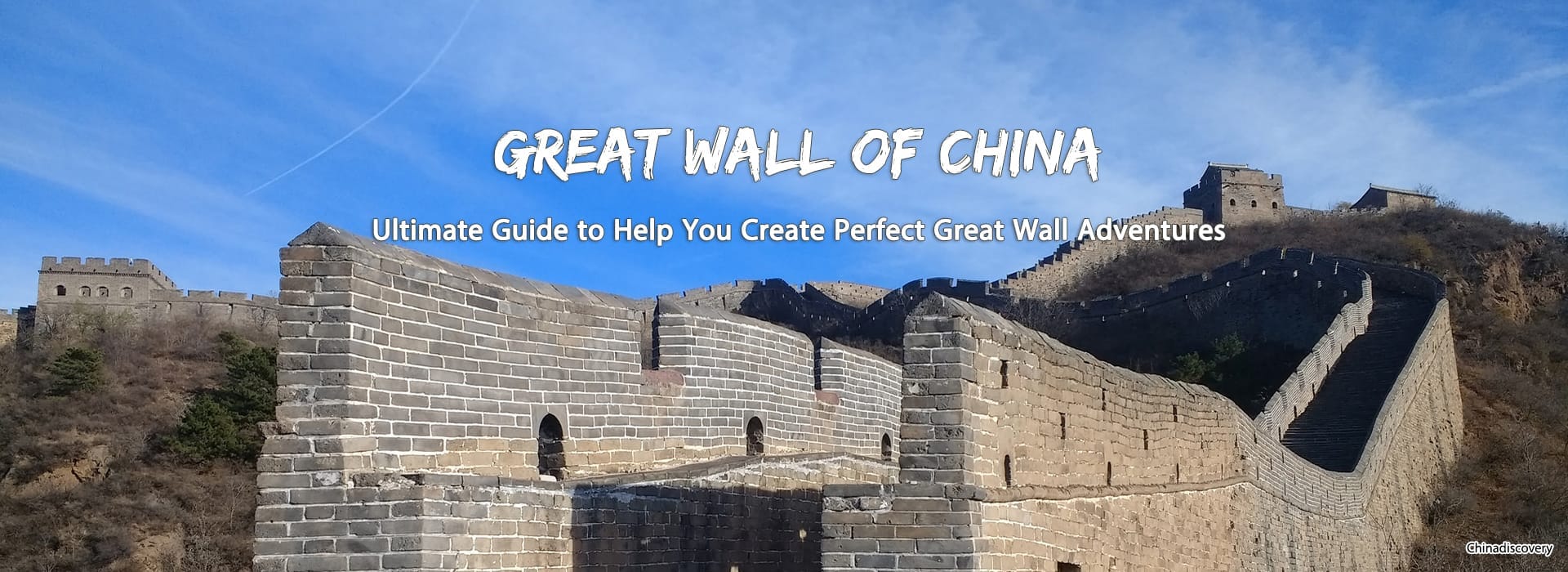
Ultimate Great Wall Travel Guide | Trip Planning Ideas 2024/2025
As one of the Seven Wonders of the World, the Great Wall of China is on almost everyone’s bucket list. There is nothing that can be compared with the experience of standing on the soaring watchtowers to see how this colossal ancient engineering project spanning across thousands of mile from west of China to its east. No matter how long you want to hike, and how wild scenery you want to see, there is always a section of the Great Wall for you. But how much do you really know about the Great Wall? Do you have idea where to start with your Great Wall tour planning? Which section of Great Wall suits you well? When is the best time to have a Greaet Tour? You will find there are so many things to learn and prepare before you go. Here we have complied this Great Wall of China Ultimate Guide which have synthesized the most useful insights and tips from our Great Wall researcher and Beijing local tour guide to help you plan the perfect Great Wall adventure.
A Beijing tour without Great Wall is not complete, is that true?
This is definitely true. Just as Beijing is the no. 1 destination in China, the Great Wall is also no doubt the No. 1 attraction in Beijing. It is on almost everyone’s bucket list as an essential stop on any trip to Beijing. The Great Wall is one of the World’s Seven Wonders, also one of the most impressive ancient structures on the planet. It boasts a history of overy 2,000 years, and stretches more than 5,500 miles from northwest to northeast of China. There are many featured sections location near Beijing. You only need a half day to see, walk, climb and experience one highlighting section of the Great Wall. If time allows, you are suggested to spend 1 or 2 full days to enjoy an in-depth hiking to one or 2 wild sections of the Great Wall.
Recommended Beijing Tours including Great Wall:
- 2 Days Beijing Layover Highlights Tour (Highlights of Beijing) - 3 Days Beijing Essential Short Stay Tour (Transit Visa Free) - 4 Days Classic Beijing Tour Package (Ancient and Modernity Contrast)
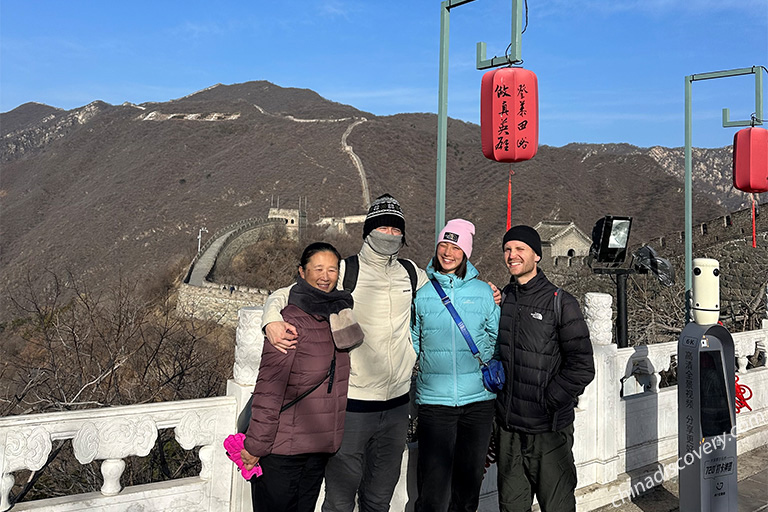
Mutianyu Section of Great Wall in July
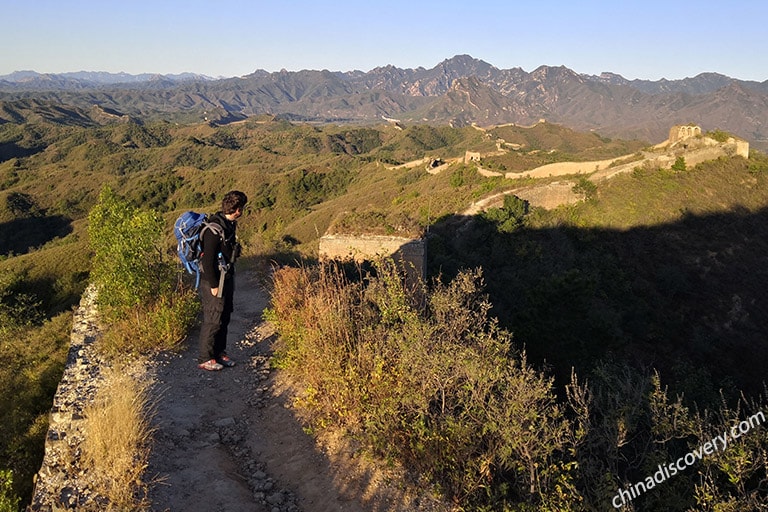
Gubekou Section of Great Wall
Always Consider Traveling with a Guide and Tour Package
The best way to visit the Great Walll is to travel with a private tour. Most of costs, including tickets, cable cars, meals and hotels, on the tour are covered. More importantly, you will be accompanied by the experienced guide, which is very important and necessary when you are going to visit the remote and wild sections of Great Wall, such as Jinshanling, Simatai, Gubeikou, etc. You guide will give you many helpful advice on the right and safe routes to hike. As you may know, some wild sections of the Great Wall are very dangerous to hike, and hard to rescue as well if an accident occurs. You will also get many handy tips and useful knowledge during your Great Wall visit. Traveling with a private tour, you will save a lof of time and get rid of the crowdedness of public transportation. Besides, some sections of Great Wall can only be reached by private cars, such as Gubeikou.
Best Selling Beijing Tour including Mutianyu Great Wall:
- 4 Days Classic Beijing Tour Package (Ancient and Modernity Contrast)
Can I Do The Great Wall on a Layover?
You can visit the Great Wall on a layover, but you must have at least 8 hours to spend before your flight departing. You will need about 1 hour to exist the airport, then 2~3 hours to find transportation and transfer to the Great Wall, and 2~3 hours to visit and walk the Wall, then get back to the airport to catch your flight. You also have to pray for not having traffic jams. Currently there is no public transportation from the airport to the Great Wall. You have to hire a taxi or book a private transfer from travel agencies. Generally speaking, if you have about 8~12 hours for layover, you can go to visit one section of Great Wall, such as Mutianyu, Huanghuacheng, Badaling or Juyongguan. To visit Jinshanling, Simatai, Gubekou section, you need at least a full day (24hrs).
Currently you can enjoy a visa-tree stay up to 144 hours in Beijing if you meet the Beijing 144-hour Transit Visa Free Policy . It time allows, you are strongly suggested to have a longer stay in Beijing to explore the Great Wall with other Beijing highlights, such as Forbidden City, Summer Palace, Temple of Heaven, etc., at a slower leisure pace.
Recommended Beijing Visa Free Tour Package starting from the airport:
- 3 Days Beijing Essential Short Stay Tour (Transit Visa Free)

Badaling Section of Great Wall (65km from Beijing)
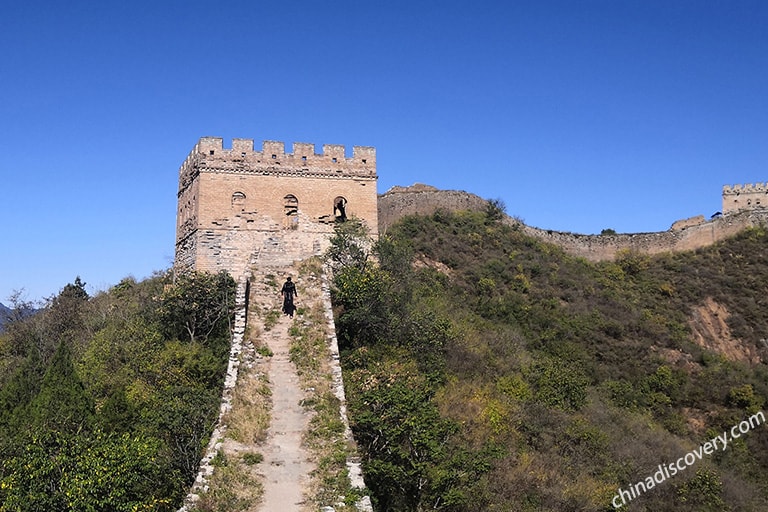
Hiking on the Great Wall
Is the Great Wall a Kid-Friendly Destination?
The Great Wall has many sections. Some are kid-friendly, and some not. Walking on the Great Wall is physical demanding. You should choose the sections of Great Wall which are easier to walk and not too far away from the city. Generally speaking, Mutianyu and Huanghuacheng are two most kid-friendly destination. They are both only about 1.5hrs’ driving from central Beijing. Both two sections provide cable cars to transport to the top of the Great Wall. Mutianyu also has an exciting toboggan ride for you and your kids to slide down the great wall like an adventure. While in Huanghuacheng section of Great Wall, you can take a boat on the lake whiling enjoying the magnificent great wall landscape. If your kids are over 12 years ago, you can also plan a hike trip to Jinshanling, Simatai or Gubekou sections of the Great Wall.
Keep Reading: - Top Beijing Family Tours
What Are the Best Sections of the Great Wall to Visit from Beijing?
There are more than 10 sections of Great Wall located in the northern area about 60~160km from central Beijing. Mutianyu is the best option if you travel with kids, or want to enjoy a leisure and scenic hike. If you are a hiker, choose 1 or 2 sections among Jinshanling, Simatai and Gubekou to hike 1 or 2 days. If you are the second-timer, maybe Huanghuacheng section will be very attractive to you. Its lakeside walls are very stunning.
Keep Reading: - Complete Guide on Which Section of Great Wall to Visit
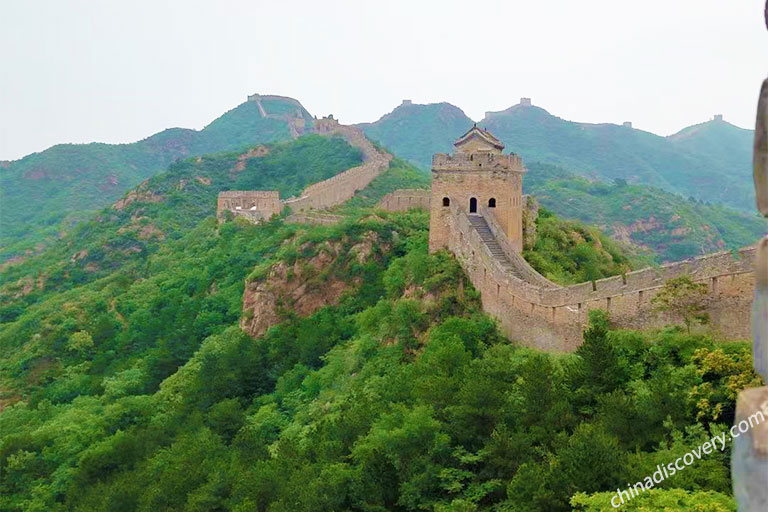
Magnificent Jinshanling Great Wall Landscape

Mutianyu Great Wall in Spring
When is the Best Time to Visit the Great Wall?
You’d better not visit the popular sections of the Great Wall, such as Badaling and Mutianyu, during Chinese holidays and festivals to avoid the crowds, including the Spring Festival(usually in Febuary), National Day(1st to 7th, October), Middle Autumn Festival (usually in later September), etc. If your time is not flexible, try to visit the not crowded sections of Great Wall, such as Simatai, Jinshanling, Gubeikou, etc.
How do I get to the Great Wall of China?
The location of each section of Great Wall varies greatly so is the available transportation. Some sections, which are closer to Beijing, can be reached easily, such as Badaling, Mutianyu, Juyongguan and Huanghuacheng. These sections of Great Wall provide flexible choices of transportation, including private car, train, tourist bus and public buses. Some sections of Great Wall are much further away from Chengdu, including Jinshanling, Simatai, Gubekou. Travellers can only get there by private car or public buses (usually takes much longer, and need to change bus for several times).
Keep Reading: - Complete Guide on How to Get to Great Wall from Beijing
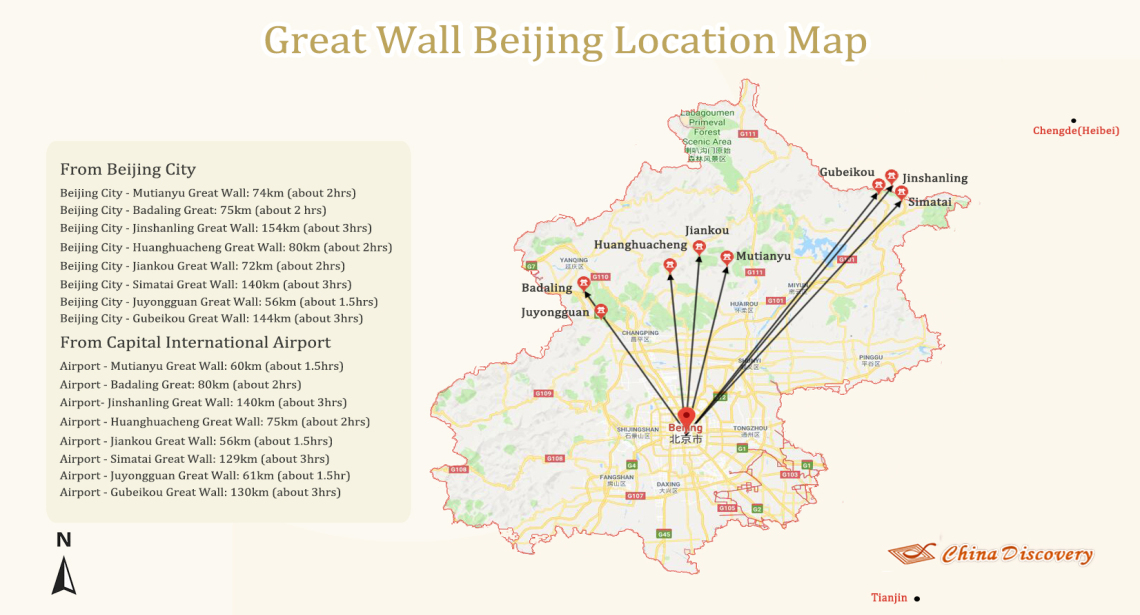
Beijing Great Wall Location Map
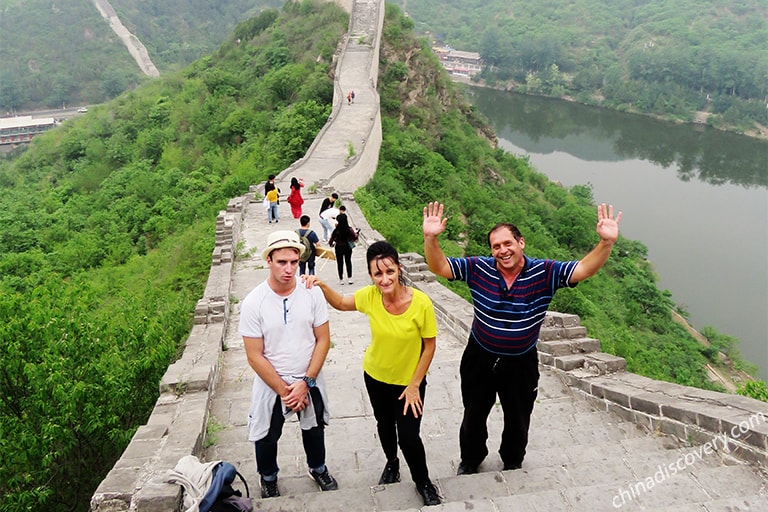
Huanghuacheng Great Wall with Waterscape
Are There Some Unique Ways to Explore the Great Wall of China?
There are many ways to explore the charms of the Great Wall. You can plan your Great Wall visit according to your interest (hike, photography, history, landscape), time (2hours, half day, 1 day, 2 days) and physical condition. Below are Top 5 Great Wall Experiences:
Hiking the wild section of Great Wall - the in-depth way to explore the Great Wall. It’s adventurous, hidropoietic and scenic. You have to pack well for the hiking as there is no restaurant and shops on the Great Wall. Some basic trekking gears are required. Learn more about Great Wall Hiking .
Visiting the Great Wall at Night - Simatai section of Great Wall is the only section of Great Wall, which is open for tourist in evening. It will be lit up during 17:30~21. 00. Simatai Great Wall is about 3hrs’ driving from Beijing. You are suggested to take a full day tour which include Simatai night visit with Jinshanling Great Wall daytime hiking. 4 Days Beijing Essence Tour with Simatai Great Wall Night Sightseeing .
Picnic on the Great Wall – having a picnic in a watchtower on the Great Wall is a part of the Great Wall hiking on these wild unrestored sections of Great Wall. But only some of the wild sections of the Great Wall allow tourists to have a picnic, such as Gubekou, Jinshanling, etc.
Ride a Toboggan down the Great Wall - it’s a very fast and exciting way to descend the Great Wall. Currently, only Mutianyu and Badaling operate Toboggan ride. Mutianyu Great Wall Taboggan | Badaling Great Wall Taboggan .
Taking a boat to see the Great Wall - very recommended for the second Great Wall visit if you already visited Mutianyu or Badaling. Taking a boat leisurely cruising on the lake while enjoying the Huanghuacheng Section Great Wall hanging over the mountain near the lake is best way to recover from the tough Great Wall hike.
Can I Visit the Great Wall of China at Night?
Yes, you can visit the Great Wall of China, but only the Simatai section is open to tourist in the night, usually from17:30 to 21:00. Badaling section of Great Wall is sometimes lit up in the night, but not allow tourists to get onto the wall.
How to visit Simatai Great Wall in the night?
Simatai section of Great Wall is located close to Gubei Water Town, Miyun District, 150 kilometers (94 miles) from Beijing, approx. 2.5~3 hours' drive. Please note all visitors who visit Simatai section of Great Wall during daytime must exit the scenic area before 17:00. Then it will reopen for night visitors at 17:30 after getting lights on. If you want to visit the Wall in both daytime and night, you have to buy tickets twice. Night visitors have to take cable car up to the Great Wall, and take cable car down as well. The night visit is around 1 hour. Currently only the part between No. 5 tower and No.6 tower is open in the nighttime. Our suggestion is to visit another section of Great Wall nearby in the daytime, such as Jinshanling or Gubeikou, and visit Simatai in the night so that you don’t have to visit Simatai for twice.
After the Great Wall night tour, you can choose to transfer back to the city Beijing, or stay a night at Gubei Water Town at the foot of the Great Wall.
Recommended Simatai Great Wall Night Tour - 4 Days Beijing Essence Tour with Simatai Great Wall Night Sightseeing
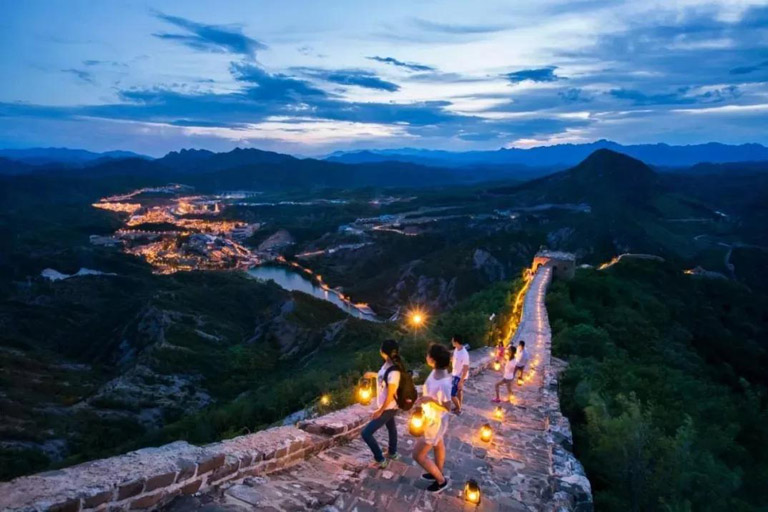
Simatai Great Wall is the Only Section of Great Wall Open and Lit Up in the Evening
Can I Camp on the Great Wall of China?
Available camping season is from late March to June, and from September to early October. July and August are not recommended as it takes much risk of disruption by thunderstorms, heavy rain, or extreme hot. It is also not recommended to camp during winter days. It’s very cold and windy especially during nighttime.
Accessibility at the Great Wall of China
The Great Wall is not very wheelchair friendly because most sections of the Great Wall were constructed on treacherous ridge of up-and-down mountains, and the grounds on the wall are mostly made by stone steps. Some wild sections of Great Wall even don’t have a road to walk as the walls and towers are broken. But this doesn’t mean the wheelchair travellers or the elderly can not visit the Great Wall. Actually, the lower paths of most sections of Great Wall are accessible by wheelchair, and some sections are generally wheelchair friendly. In Badaling Section of Great Wall, wheelchair travellers can take the ramps to get to the first north watchtower. The scenic area also offers elevator service. In Mutianyu Section of Great Wall, wheelchair travellers can take a cable car directly up to the Wall. The fortress of Juyongguan section is accessible by wheel chair.
Keep Reading: Mutianyu Great Wall Cable Car | Badaling Great Wall Cable Car
Best Great Wall Trips for 2024
No matter it is your first, or the second or the third trip to the Great Wall, China Discovery will always find a suitable tour package for you to see and experience the Great Wall in the best way. If you are one of the first-timers, you are suggested to visit Mutianyu section of Great Wall or Jinshanling Great Wall. If you are the second-timers, it's time to take a memorable hike to those wild section of Great Wall, such as Simatai, Gubeikou, Huanghuacheng, etc. If you still have no idea where to start, you can contact us to design a tailor-made Great Wall trip for you.
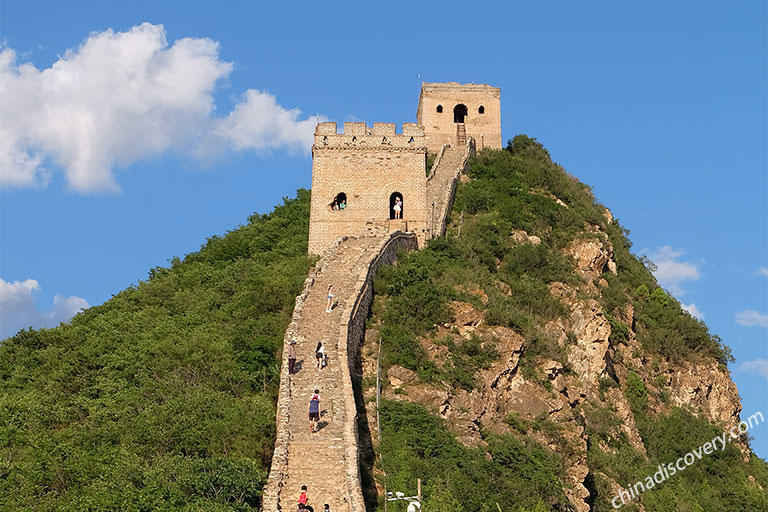
Jinshanling Great Wall, Simatai Great Wall

Great Wall Section(s): Mutianyu/Huanghuacheng
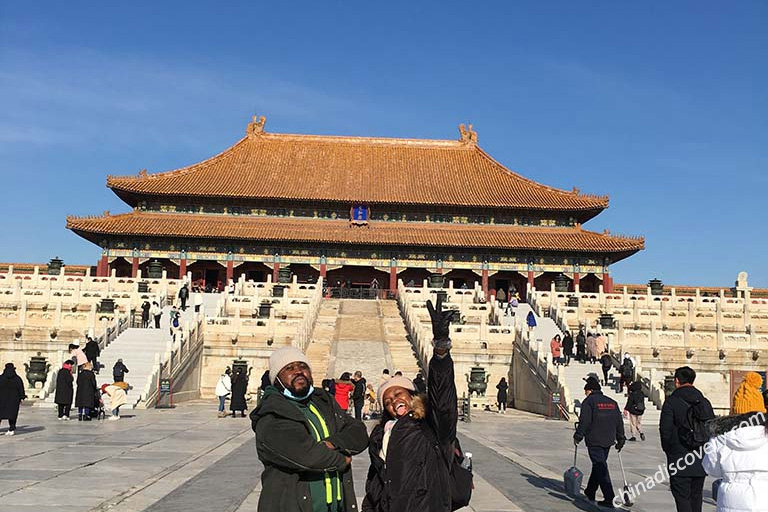
Forbidden City, Jingshan Park, Mutianyu Great Wall, Hutong, Bird's Nest, Water Cube
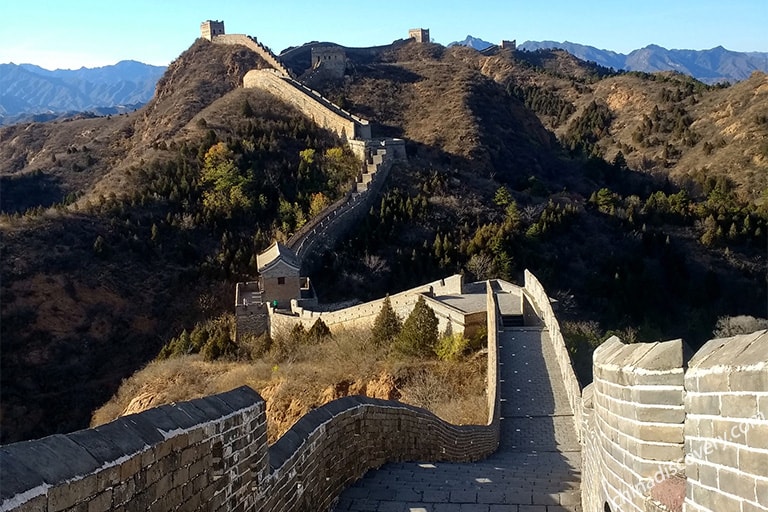
Great Wall Section(s): Jinshanling
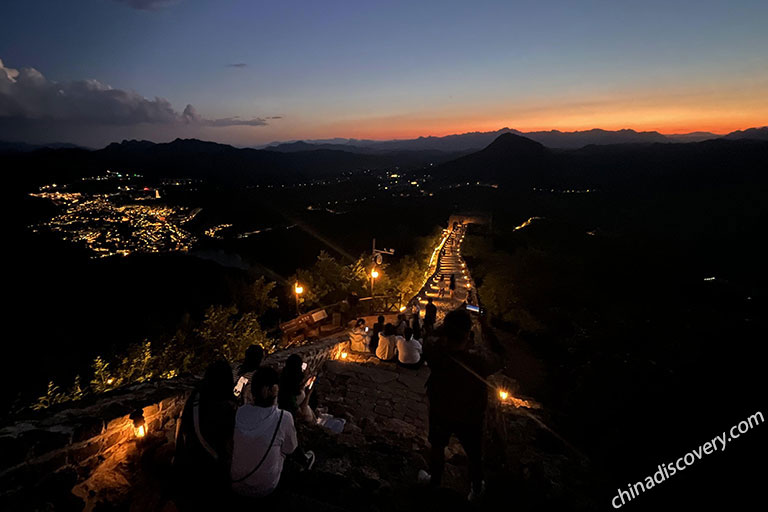
Great Wall Sections: Jinshanling + Simatai
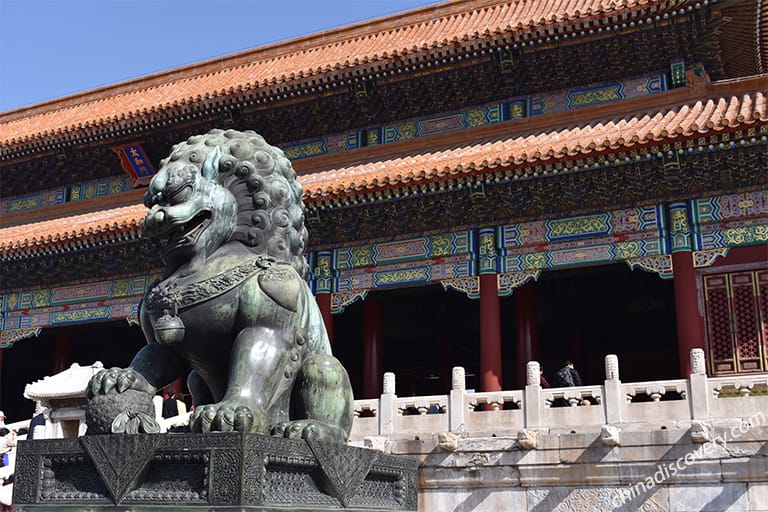
Great Wall Section(s): Mutianyu
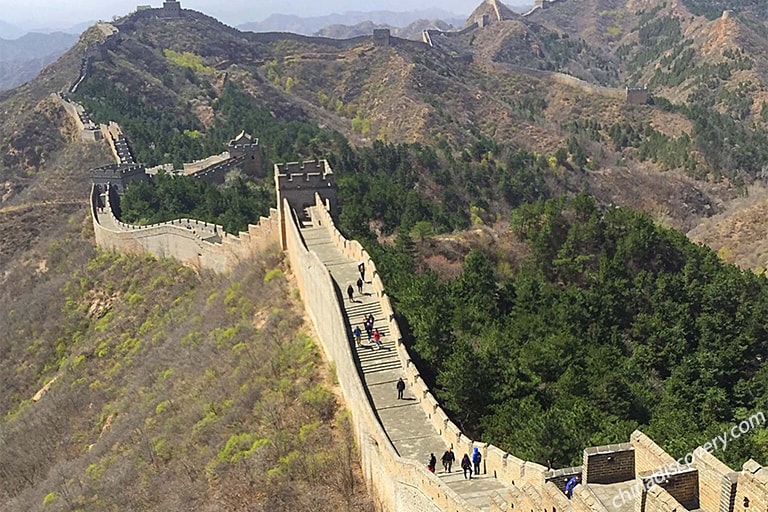
Forbidden City, Terracotta Warriors, Jinshanling Great Wall hiking, Mount Huashan hiking
Start planning your tailor-made holiday to China by contacting one of our specialists. Once inquired, you’ll get a response within 0.5~23.5 hours.

Have a question? Get answers from our travel experts or guests
- Your Question:
- Your Email:
- Affordable and valuable price
- 100% tailor-made packages
- Highly rated customers reviews
- Efficient customer support
China Tours
- Top 10 China Tours
- Classic China Tours
- China Tours from Beijing
- China Tours from Shanghai
- China Tours from Hong Kong
- China Tours from Chengdu
- Short China Trips
- Customize China Tour
- China Panda Tours
- Family Tour with Kids
- High-Speed Train Tour
- Silk Road Travel
- Yangtze River Cruise
- Hiking & Trekking Tours
- Photography Tours
- China Minority Travel
- Beijing Shanghai Tours
- Shanghai Yangtze Tours
- Chengdu Jiuzhaigou Tours
- Chengdu Lhasa Tours
- Suzhou Hangzhou Tours
- Guilin & Yangshuo
- Zhangjiajie
“Very good experience”
“WONDERFUL 25 DAYS IN CHINA - PRIVATE TOUR”
“Awesome China tour from northeast to southwest”
Any questions, please email us at: [email protected] or call us at: 86-19138970032 (Monday-Friday 9 a.m. to 6 p.m. GMT+8)
- Terms & Condition
- Privacy Policy
- Customer Support
Copyright © 2011-2024. All rights reserved.
Cookie policy
We use cookies to give you the best experience on our website. Continue using our website means you agree with our cookie policy. For more info, please read here .
Take advantage of the search to browse through the World Heritage Centre information.
Share on social media
Unesco social media, the great wall.
- Description
In c. 220 B.C., under Qin Shi Huang, sections of earlier fortifications were joined together to form a united defence system against invasions from the north. Construction continued up to the Ming dynasty (1368–1644), when the Great Wall became the world's largest military structure. Its historic and strategic importance is matched only by its architectural significance.
Description is available under license CC-BY-SA IGO 3.0
La Grande Muraille
Vers 220 av. J.-C., Qin Shin Huang entreprit de réunir des tronçons de fortifications existants pour en faire un système défensif cohérent contre les invasions venues du nord. Poursuivis jusque sous les Ming (1368-1644), ces travaux ont produit le plus gigantesque ouvrage de génie militaire du monde. Son importance historique et stratégique n'a d'égale que sa valeur architecturale.
السور العظيم
قرابة العام 220 ق.م. بدأ كين شين هوانغ يجمع بقايا حصون قائمة ليُشكّل فسيفساء نظام دفاع متسقِ في وجه اجتياحات الشمال. وتتابعت هذه الأعمال أثناء حكم سلاسة مينغ (1368-1644) فأثمرت أعظم إبداع عسكري عملاق في العالم. ولا توزاي أهميّة السور التاريخيّة والإستراتيجيّة سوى قيمته الهندسيّة.
source: UNESCO/CPE Description is available under license CC-BY-SA IGO 3.0
公元前约220年,秦始皇下令将早期修建的一些分散的防御工事连接成一个完整的防御系统,用以抵抗来自北方的侵略。长城的修建一直持续到明代(1368至1644年),终于建成为世界上最大的军事设施。长城在建筑学上的价值,足以与其在历史和战略上的重要性相媲美。
La Gran Muralla
Hacia el año 220 a.C., el primer emperador Qin Shin Huang ordenó reunir los tramos de fortificaciones construidas anteriormente, a fin de crear un sistema de defensa coherente contra las invasiones de los pueblos del Norte. Los trabajos de edificación de la Gran Muralla prosiguieron hasta la dinastía de los Ming (1368-1644), dando por resultado la obra de ingeniería militar mí¡s gigantesca de todos los tiempos. Su gran valor arquitectónico es comparable a su importancia histórica y estratégica.
source: NFUAJ
Chinese Muur
Tijdens de eerste Qin dynastie onder keizer Qin Shi Huang (220 voor Christus) werden gedeelten van vroegere vestingwerken samengevoegd om een uniek verdedigingssysteem tegen invasies vanuit het noorden te vormen. Het bouwen duurde voort tot aan de Ming dynastie (1368-1644) waarmee de Chinese Muur het grootste militaire bouwwerk op aarde werd met een totale lengte van meer dan 20.000 kilometer. De muur begint in het oosten bij Shanhaiguan, in de provincie Hebei en eindigt in het westen bij Jiayuguan, in de provincie Gansu is van buitengewoon belang vanuit historisch, strategisch en architectonisch opzicht.
Source: unesco.nl
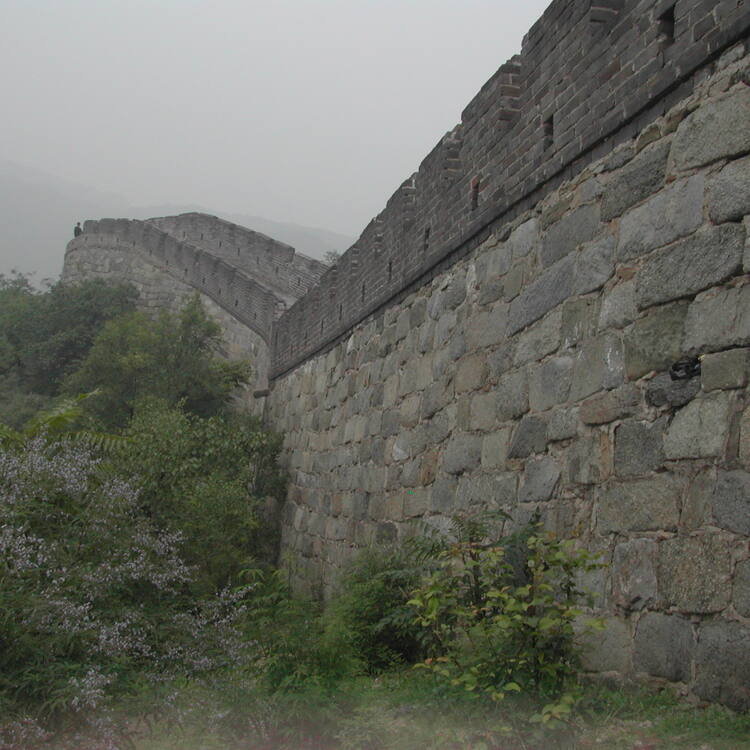
Outstanding Universal Value
Brief synthesis
The Great Wall was continuously built from the 3rd century BC to the 17th century AD on the northern border of the country as the great military defence project of successive Chinese Empires, with a total length of more than 20,000 kilometers. The Great Wall begins in the east at Shanhaiguan in Hebei province and ends at Jiayuguan in Gansu province to the west. Its main body consists of walls, horse tracks, watch towers, and shelters on the wall, and includes fortresses and passes along the Wall.
The Great Wall reflects collision and exchanges between agricultural civilizations and nomadic civilizations in ancient China. It provides significant physical evidence of the far-sighted political strategic thinking and mighty military and national defence forces of central empires in ancient China, and is an outstanding example of the superb military architecture, technology and art of ancient China. It embodies unparalleled significance as the national symbol for safeguarding the security of the country and its people.
Criterion (i) : The Great Wall of the Ming is, not only because of the ambitious character of the undertaking but also the perfection of its construction, an absolute masterpiece. The only work built by human hands on this planet that can be seen from the moon, the Wall constitutes, on the vast scale of a continent, a perfect example of architecture integrated into the landscape.
Criterion (ii): During the Chunqiu period, the Chinese imposed their models of construction and organization of space in building the defence works along the northern frontier. The spread of Sinicism was accentuated by the population transfers necessitated by the Great Wall.
Criterion (iii): That the Great Wall bear exceptional testimony to the civilizations of ancient China is illustrated as much by the rammed-earth sections of fortifications dating from the Western Han that are conserved in the Gansu province as by the admirable and universally acclaimed masonry of the Ming period.
Criterion (iv): This complex and diachronic cultural property is an outstanding and unique example of a military architectural ensemble which served a single strategic purpose for 2000 years, but whose construction history illustrates successive advances in defence techniques and adaptation to changing political contexts.
Criterion (vi): The Great Wall has an incomparable symbolic significance in the history of China. Its purpose was to protect China from outside aggression, but also to preserve its culture from the customs of foreign barbarians. Because its construction implied suffering, it is one of the essential references in Chinese literature, being found in works like the "Soldier's Ballad" of Tch'en Lin (c. 200 A.D.) or the poems of Tu Fu (712-770) and the popular novels of the Ming period.
The Great Wall integrally preserves all the material and spiritual elements and historical and cultural information that carry its outstanding universal value. The complete route of the Great Wall over 20,000 kilometers, as well as elements constructed in different historical periods which constitute the complicated defence system of the property, including walls, fortresses, passes and beacon towers, have been preserved to the present day. The building methods of the Great Wall in different times and places have been integrally maintained, while the unparalleled national and cultural significance of the Great Wall to China is still recognised today. The visual integrity of the Wall at Badaling has been impacted negatively by construction of tourist facilities and a cable car.
Authenticity
The existing elements of the Great Wall retain their original location, material, form, technology and structure. The original layout and composition of various constituents of the Great Wall defence system are maintained, while the perfect integration of the Great Wall with the topography, to form a meandering landscape feature, and the military concepts it embodies have all been authentically preserved. The authenticity of the setting of the Great Wall is vulnerable to construction of inappropriate tourism facilities.
Protection and management requirements
The various components of the Great Wall have all been listed as state or provincial priority protected sites under the Law of the People’s Republic of China on the Protection of Cultural Relics . The Regulations on the Protection of the Great Wall promulgated in 2006 is the specific legal document for the conservation and management of the Great Wall. The series of Great Wall Conservation Plans, which is being constantly extended and improved and covers various levels from master plan to provincial plans and specific plans, is an important guarantee of the comprehensive conservation and management of the Great Wall. China’s national administration on cultural heritage, and provincial cultural heritage administrations where sections of the Great Wall are located, are responsible for guiding the local governments on the implementation of conservation and management measures for the Great Wall.
The Outstanding Universal Value of the Great Wall and all its attributes must be protected as a whole, so as to fulfill authentic, integral and permanent preservation of the property. To this end, considering the characteristics of the Great Wall, including its massive scale, transprovincial distribution and complicated conditions for its protection and conservation, management procedures and regulations, conservation interventions for the original fabric and setting, and tourism management shall be more systematic, scientific, classified, and prioritized. An efficient comprehensive management system, as well as specific conservation measures for the original fabric and setting will be established, while a harmonious relationship featuring sustainable development between heritage protection and social economy and culture can be formed. Meanwhile, the study and dissemination of the rich connotation of the property’s Outstanding Universal Value shall be enhanced, so as to fully and sustainably realize the social and cultural benefits of the Great Wall.
- Great wall at Badaling
- Official website page (in Chinese only)
- Lanzhou University (chinese only)
- Meet the Great Wall (Meet the Great Wall Studio)
- Great Wall of China (TravelChinaGuide.com)

State of Conservation (SOC)
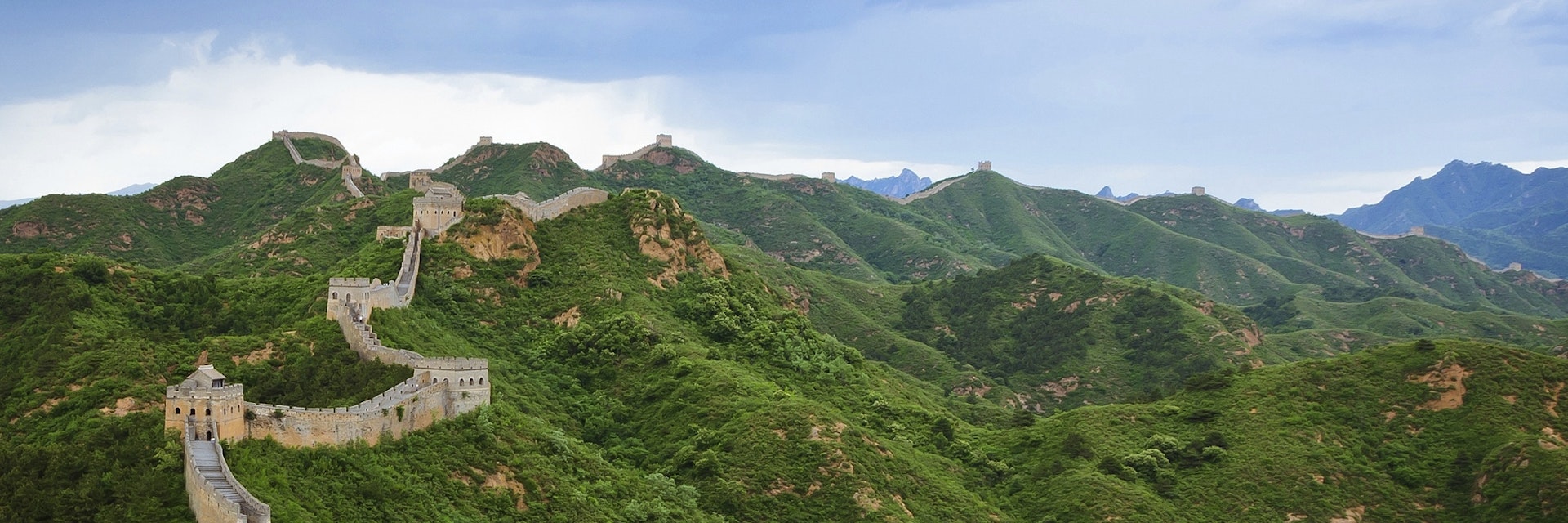
The Great Wall
Coiling its way through 23 degrees of longitude, the Great Wall (长城, Chángchéng) stands as an awe-inspiring monument to the grandeur of China’s ancient history. With sections dating back 2000 years, the wall (or, more accurately, walls, because they belong to several different eras) wriggle haphazardly from their scattered Manchurian remains in Liaoning province to wind-scoured rubble in the Gobi desert and faint traces in the unforgiving sands of Xinjiang. Interspersed with natural defences (such as precipitous mountains), the Great Wall can be visited in 15 Chinese provinces, principalities and autonomous regions, but nowhere is better than Beijing for mounting your assault on this most iconic of bastions.

Your next trip starts here
Go from dreaming to planning with trip planning options made to help you craft your ideal itinerary.
Attractions
Must-see attractions.

Jiankou Great Wall
For stupefying hikes along perhaps Beijing’s most incomparable section of Wall, head to Jiankou, where white-knuckle sections like ‘Upward Flying Eagle’…

Jinshanling
Jinshanling Great Wall, near the town of Gubeikou, has been thoroughly restored, but it's distant enough from Beijing that it sees far fewer tourists than…

Famed for its Ming-era guard towers and excellent views, the 3km-long section of wall at Mutianyu, northeast of Beijing in Huairou County, is largely a…

Simatai, built during the reign of Ming dynasty emperor Hongwu, is famed for the precarious steepness of its battlements as they soar up the 'heavenly…

Historically a strategic portal between the fertile lands of the capital and the more arid plains beyond, Badaling has been called the ‘Key to Northern…

China Great Wall Museum
This sizeable museum blusters through a history of the Wall, from its origins as an earthen embankment in the far-off Qin dynasty (221–207 BC) to the Ming…

Gubei Water Town
Cashing in on the magnificent Simatai Great Wall that overlooks it, this faux-historic village of waterways and old courtyards is a commercial venture…
Latest stories from The Great Wall
Filter by interest:
- All Interests
- Adventure Travel
- Art & Culture
- Beaches, Coasts & Islands
- Food & Drink

Sep 2, 2020 • 5 min read
Cloaked in legend and mystique, the Great Wall of China is often misunderstood. Here's everything you need to know about this remarkable structure.

Mar 25, 2020 • 1 min read
Purchase our award-winning guidebooks
Get to the heart of The Great Wall with one of our in-depth, award-winning guidebooks, covering maps, itineraries, and expert guidance.
10 Things to Know about the Great Wall of China
By Simatai Great Wall
Four seasons scenery of Simatai Great Wall - Autumn by Simatai Great Wall Simatai Great Wall
1. The total length of the Great Wall is 21196.18 km
The Great Wall is the largest man-made project in the world. The complete route is over 20,000 km, stretching from the east seaside to the west desert in northern China, winding up and down across mountains and plateaus like a dragon.
Jiayu Pass by Zhixia Nayol / Tuchong Simatai Great Wall
2. There are 15 strategic passes from the East to the West
The Great Wall stretches across 15 northern Chinese provinces, municipalities and autonomous regions, from the Bohai Sea in the east to the Gobi Desert, 2,500 kilometers away in the west. There are 15 geographically important passes built along the route.
The "First Pier" of the Great Wall at Jiayu Pass by FinalLap / Tuchong Simatai Great Wall
3. It took over 2,000 years to construct the wall
The first emperor of China, Qin Shi Huang took the remnants of ancient fortifications, walls, and earthworks and linked them into a unified wall circa 220 B.C. This picture shows the "First Pier of the Great Wall" which was built with rammed loess in 1539 A.D.
Apricot blossoms bloom in the west section of Simatai Great Wall (2021-05-11) by Wu Qiang Simatai Great Wall
4. It is not a wall but a series of fortifications
The Great Wall is not a single-structured wall, it includes beacon towers, barriers, barracks, garrison stations, and fortresses along the walls, together forming an integrated defense system.
Maintenance and protection of the Great Wall (2021-08-11) by Wu Qiang Simatai Great Wall
5. Various materials were used to build the Great Wall
The Great Wall is a massive monument built with different materials. Most of the sections we see today were built with bricks and cut stone blocks, and lime mortar was used to hold the bricks together. Where bricks and blocks weren't available, tamped earth, uncut stones, and wood were used as local materials.
"Old Dragon's Head" at Shanhai Pass by Jianwangde Xingsheshijie / Tuchong Simatai Great Wall
6. The eastern beginning in the sea: Shanhai Pass
Shanhai Pass was a fortress built in the Ming Dynasty (1368 – 1644) and is the first pass in the East of China. It is located outside of Qinhuangdao City on Bohai Bay and 305 km away from Beijing. Given its strategic location, it's reputed as the "First pass under heaven".
Jiayu Pass by Cai Xiaoxiang / Tuchong Simatai Great Wall
7. The western end in the Gobi Desert: Jiayu Pass
Jiayu Pass is famous for being the first frontier fortress at the western end of the Great Wall of China in the Ming Dynasty. Among the hundreds of passes of the Great Wall, Jiayu Pass is one of the most well-preserved passes in existence.
8. An ancient tale of love: the legend of lady Mengjiang
It's one of the four greatest love legends in ancient China. Lady Mengjiang's husband was sent to build the Great Wall, and never gave news. She departed to bring winter clothes to him but heard that he had already died. She weeped so bitterly that part of the wall collapsed.
Character brick at Simatai Great Wall (2021-04-05) by Wu Qiang Simatai Great Wall
9. The workers from ancient times left marks on the bricks
Some say that the texts on the bricks is a method that General Qi Jiguang devised in order to assess the quality of the bricks made by the soldiers, and to clarify the responsibilities. However, historians questioned this. Read more here
Juyong Pass Great Wall by Pingchangxin yq / Tuchong Simatai Great Wall
10. It is Chinese people's greatest cultural icon
The Great Wall is the product of countless labors over a period of 2,000 years, and is a feast of engineering. It also reflected the collision and exchanges between the agricultural and nomadic civilizations. In the Yuan Dynasty (1272-1368), the Juyong Pass functioned as a major traffic artery from Beijing to Inner Mongolia. Since Yuan emperors often took this route between those places, temporary imperial palaces, temples, and gardens were constructed.
Simatai: “Museum of the Great Wall”
Simatai great wall, “first pass under heaven”: the shanhai pass, the general tower, the kirin screen wall, the fairy tower, eighth of the 15 passes: zijingguan, the lady's pass (niangzi pass), the “turtle ridge'': simatai great wall east 11th tower, interior architectural structure of the great wall.
- History Classics
- Your Profile
- Find History on Facebook (Opens in a new window)
- Find History on Twitter (Opens in a new window)
- Find History on YouTube (Opens in a new window)
- Find History on Instagram (Opens in a new window)
- Find History on TikTok (Opens in a new window)
- This Day In History
- History Podcasts
- History Vault
Great Wall of China
By: History.com Editors
Updated: April 18, 2024 | Original: August 24, 2010

The Great Wall of China is an ancient series of walls and fortifications, totaling more than 13,000 miles in length, located in northern China. Perhaps the most recognizable symbol of China and its long and vivid history, the Great Wall was originally conceived by Emperor Qin Shi Huang in the third century B.C. as a means of preventing incursions from barbarian nomads. The best-known and best-preserved section of the Great Wall was built in the 14th through 17th centuries A.D., during the Ming dynasty. Though the Great Wall never effectively prevented invaders from entering China, it came to function as a powerful symbol of Chinese civilization’s enduring strength.
Qin Dynasty Construction
Though the beginning of the Great Wall of China can be traced to the fifth century B.C., many of the fortifications included in the wall date from hundreds of years earlier, when China was divided into a number of individual kingdoms during the so-called Warring States Period.
Around 220 B.C., Qin Shi Huang, the first emperor of a unified China under the Qin Dynasty , ordered that earlier fortifications between states be removed and a number of existing walls along the northern border be joined into a single system that would extend for more than 10,000 li (a li is about one-third of a mile) and protect China against attacks from the north.
Construction of the “Wan Li Chang Cheng,” or 10,000-Li-Long Wall, was one of the most ambitious building projects ever undertaken by any civilization. The famous Chinese general Meng Tian initially directed the project, and was said to have used a massive army of soldiers, convicts and commoners as workers.
Made mostly of earth and stone, the wall stretched from the China Sea port of Shanhaiguan over 3,000 miles west into Gansu province. In some strategic areas, sections of the wall overlapped for maximum security (including the Badaling stretch, north of Beijing, that was later restored during the Ming Dynasty ).
From a base of 15 to 50 feet, the Great Wall rose some 15-30 feet high and was topped by ramparts 12 feet or higher; guard towers were distributed at intervals along it.
Did you know? When Emperor Qin Shi Huang ordered construction of the Great Wall around 221 B.C., the labor force that built the wall was made up largely of soldiers and convicts. It is said that as many as 400,000 people died during the wall's construction; many of these workers were buried within the wall itself.
Great Wall of China Through the Centuries
With the death of Qin Shi Huang and the fall of the Qin Dynasty, much of the Great Wall fell into disrepair. After the fall of the later Han Dynasty , a series of frontier tribes seized control in northern China. The most powerful of these was the Northern Wei Dynasty, which repaired and extended the existing wall to defend against attacks from other tribes.
The Bei Qi kingdom (550–577) built or repaired more than 900 miles of wall, and the short-lived but effective Sui Dynasty (581–618) repaired and extended the Great Wall of China a number of times.
With the fall of the Sui and the rise of the Tang Dynasty , the Great Wall lost its importance as a fortification, as China had defeated the Tujue tribe to the north and expanded past the original frontier protected by the wall.
During the Song Dynasty, the Chinese were forced to withdraw under threat from the Liao and Jin peoples to the north, who took over many areas on both sides of the Great Wall. The powerful Yuan (Mongol) Dynasty (circa 1271-1368), established by Genghis Khan , eventually controlled all of China, parts of Asia and sections of Europe.
Though the Great Wall held little importance for the Mongols as a military fortification, soldiers were assigned to man the wall in order to protect merchants and caravans traveling along the lucrative Silk Road trade routes established during this period.
Wall Building During the Ming Dynasty
Despite its long history, the Great Wall of China as it is exists today was constructed mainly during the mighty Ming Dynasty (1368-1644).
Like the Mongols, the early Ming rulers had little interest in building border fortifications, and wall building was limited before the late 15th century. In 1421, the Ming emperor Yongle proclaimed China’s new capital, Beijing, on the site of the former Mongol city of Dadu.
Under the strong hand of the Ming rulers, Chinese culture flourished, and the period saw an immense amount of construction in addition to the Great Wall, including bridges, temples and pagodas.
Construction on the most extensive and best-preserved section of the Great Wall began around 1474. After an initial phase of territorial expansion, Ming rulers took a largely defensive stance, and their reformation and extension of the Great Wall was key to this strategy.
The Ming wall extended from the Yalu River in Liaoning Province to the eastern bank of the Taolai River in Gansu Province, and winded its way from east to west through today’s Liaoning, Hebei, Tianjin, Beijing, Inner Mongolia, Shanxi, Shaanxi, Ningxia and Gansu.
Starting west of Juyong Pass, the Great Wall was split into south and north lines, respectively named the Inner and Outer Walls. Strategic “passes” (i.e., fortresses) and gates were placed along the wall; the Juyong, Daoma and Zijing passes, closest to Beijing, were named the Three Inner Passes, while further west were Yanmen, Ningwu and Piantou, the Three Outer Passes.
All six passes were heavily garrisoned during the Ming period and considered vital to the defense of the capital.
Significance of the Great Wall of China
In the mid-17th century, the Manchus from central and southern Manchuria broke through the Great Wall and encroached on Beijing, eventually forcing the fall of the Ming Dynasty and beginning of the Qing Dynasty.
Between the 18th and 20th centuries, the Great Wall emerged as the most common emblem of China for the Western world, and a symbol both physical—as a manifestation of Chinese strength—and a psychological representation of the barrier maintained by the Chinese state to repel foreign influences and exert control over its citizens.
Today, the Great Wall is generally recognized as one of the most impressive architectural feats in human history. In 1987, UNESCO designated the Great Wall a World Heritage site, and a popular claim emerged in the 20th century that it is the only manmade structure visible from space ( NASA has since refuted this claim ).
Over the years, roadways have been cut through the wall in various points, and many sections have deteriorated after centuries of neglect. The best-known section of the Great Wall of China—Badaling, located 43 miles (70 km) northwest of Beijing—was rebuilt in the late 1950s, and attracts thousands of national and foreign tourists every day.

Sign up for Inside History
Get HISTORY’s most fascinating stories delivered to your inbox three times a week.
By submitting your information, you agree to receive emails from HISTORY and A+E Networks. You can opt out at any time. You must be 16 years or older and a resident of the United States.
More details : Privacy Notice | Terms of Use | Contact Us
- Travel Tips
- How to Visit It
- Which Section to Visit
- 6 Best Places to See
- 9 Unusual Things to Do
- Best Time to Visit
- How much does it cost to visit it?
- How to Travel There from Beijing
- How to Travel There from Beijing Airport
- How to Travel There from Shanghai
- How to Travel There from Hong Kong
- 10 Guidelines in Winter
- How to Camp on It
- Why should I visit it? - Top 10 Reasons
- Hiking & Walking
- Construction
6 Best Places to See Great Wall of China
Beijing: mutianyu great wall.
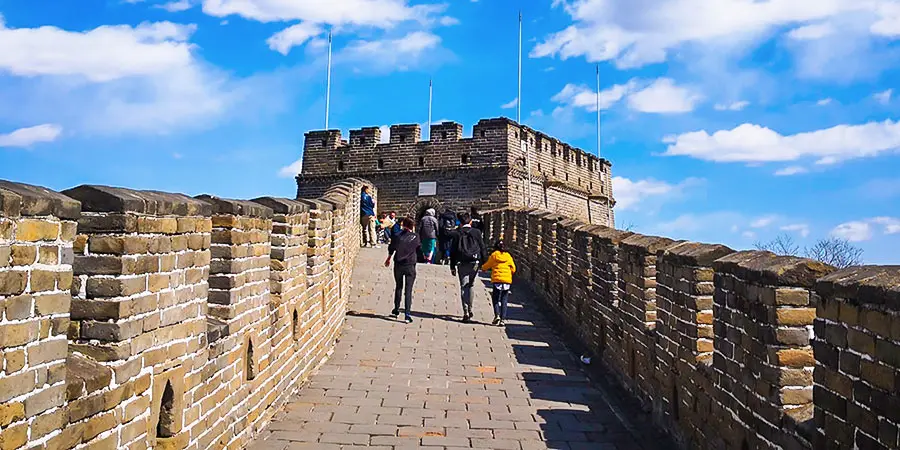
Beijing: Badaling Great Wall
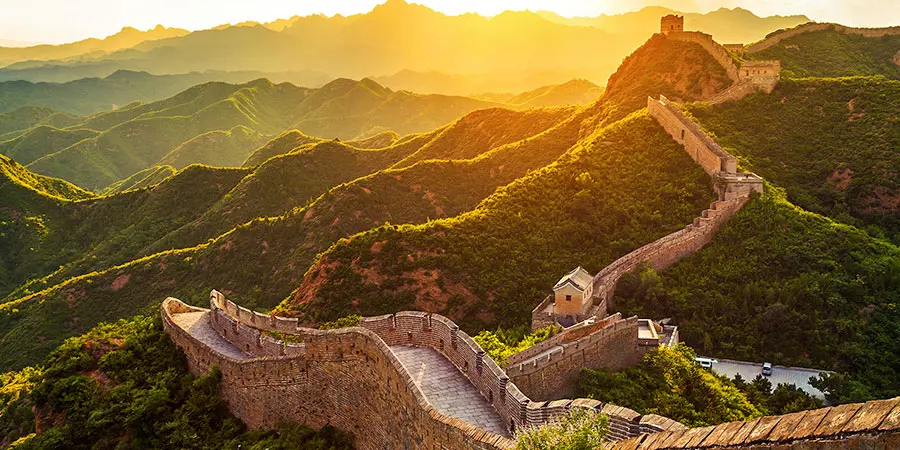
Beijing: Simatai Great Wall & Gubei Water Town
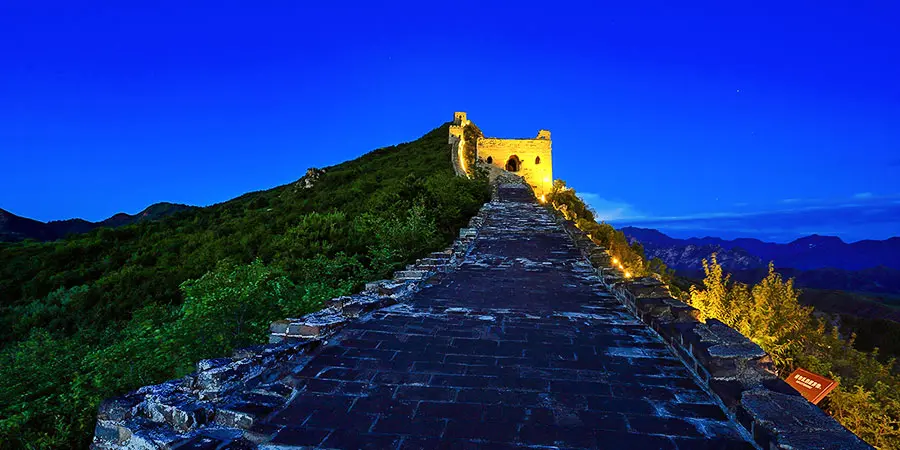
Beijing: Jinshanling Great Wall
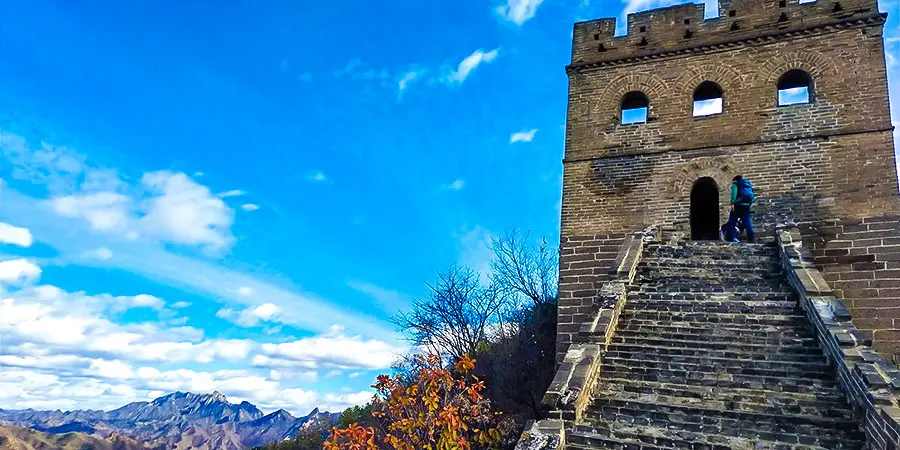
Beijing: Jiankou Great Wall
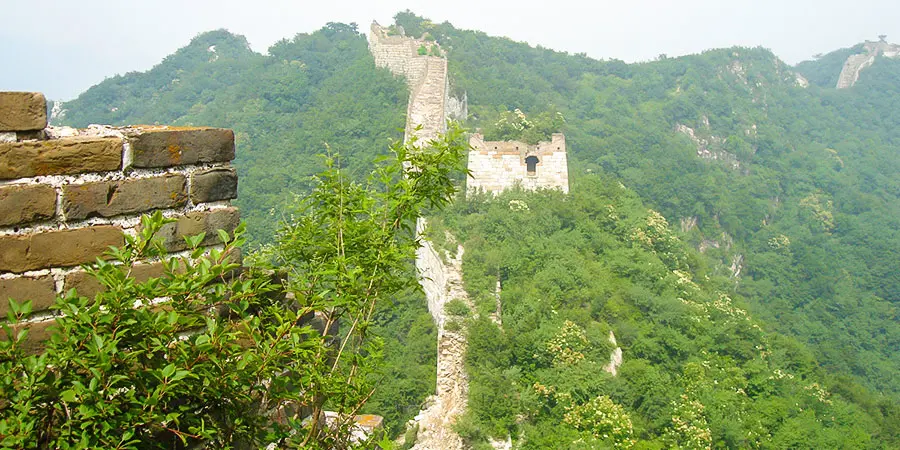
Gansu: Jiayuguan Pass , Yumenguan Pass , Dunhuang Great Wall …
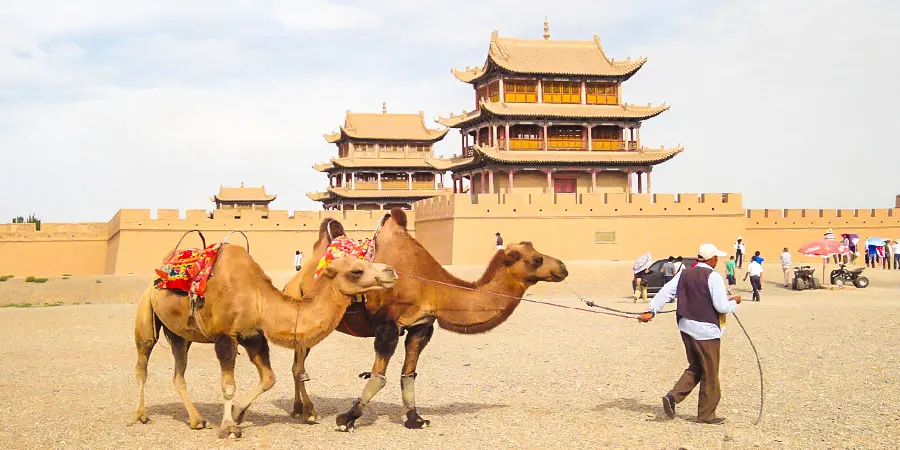
Further Reading
9 Unusual Things to Do at the Great Wall of China
Best Time to Visit Great Wall of China
6 Things to Do on Great Wall of China Badaling
6 Things to Do on Mutianyu Great Wall of China
From Watchtowers to Vistas: A Guide to Visiting The Great Wall of China
As one of the ‘new’ seven wonders of the world, you likely already know about the Great Wall of China. Often on travel bucket lists, The Great Wall is a bastion of historical integrity and offers some of the best views in China.
If you are considering visiting this ancient marvel, we’ve got a few tips to help you plan your trip. In this article, we will give you a full rundown of what to expect when you visit the Great Wall of China, including background about the wall, how you can get there and the best sections to visit for your trip.
We will also give some recommendations of where to stay near the Great Wall and provide some top tips to make your excursion a real treat.
History and Background of The Great Wall
The Great Wall of China stands as a monumental testament to China’s rich history and enduring heritage. Its origins trace back over two millennia, with construction dating as far back as the 7th century BC. It is such a significant monument in human history that it is listed as a UNESCO World Heritage site .
Initially built by various states and dynasties as separate defensive fortifications, it was during the Qin Dynasty (221-206 BC) that the walls were largely connected, forming the foundation of the iconic structure we recognise today. With its strategic significance, the wall witnessed expansions, renovations, and enhancements across many centuries.
The Great Wall of China’s length spans approximately 21,196 km and crosses 15 of China’s provinces. Unfortunately, the claim that it can be seen from space is false, but down on Earth, nothing is stopping you from seeing it with your own eyes.
How to Get to The Great Wall
Since the wall stretches out over such a long distance, there are many different ways to access the site. We recommend visiting from the capital Beijing, as some of the most accessible sections, like Badaling and Mutianyu, are just an hour and a half away.
From Beijing, you can get a train at Huangtudian Railway Station that will get you to the Great Wall in just 1.5 hours. That said, traversing China’s public transport can be quite tricky, as there is minimal English signage. For a more convenient trip, consider hiring an English-speaking driver who will also be able to guide you through the top sites on the Great Wall.
The 5 Best Sections of the Great Wall to Visit
The biggest consideration when visiting the Great Wall of China is which section you want to visit. Some sections are much more popular and have large tourist groups at all times of the year. Alternatively, there are some wilder sections of the wall which can be a real delight for their stunning natural views, but can make for a more demanding hike.
You can easily do multiple sections if you are staying for an extended period, but you will want to dedicate at least half a day to each. Below, we give you some details about the best sections of the Great Wall for your visit and what to expect when you arrive.
If you want to see the Great Wall of China in all its glory, the best section to visit is Badaling. Situated in the beautiful Yan Mountains, Badaling is easily reachable from Beijing in just under 2 hours. This part of the wall is one of the most popular among local and foreign tourists and is one of the best destinations for a guided day trip .
The section includes 7km of well-restored fortifications, so don’t be afraid to venture out and explore to beat the bustling groups of tourists. Be sure to check out the watchtowers dotted along the wall, where you can enjoy some of the best panoramic views of the surrounding mountainous landscape.
Since Badaling is very popular, you can find many shops and restaurants here that will help bulk out your visit. You can also take time to explore the Great Wall Museum. The building is designed to imitate the structure of the walls and includes 9 exhibition halls which detail the fascinating history of China’s greatest monument.
Juyongguan is one of the closest sections of the Great Wall to Beijing, located just 50 km northwest of the city centre. It is also one of the most accessible, as it is very close to the highway and there is a car park just below the Pass Towers.
Juyongguan played a significant role in safeguarding Beijing and the northern territories from invading forces in ancient times. Its strategic position in the mountain pass provided a great natural defence and its position also established it as a very important trade route.
Known as the “Valley Pass,” Juyongguan showcases both natural beauty and historical significance. The lush surroundings complement its well-preserved structures, creating a serene yet impactful visit. At the very top of the pass, visitors can find the stunning Cloud Platform Pavillion after ascending a steep staircase.
Mutianyu enjoys fewer crowds than sections like Badaling, making it a great choice for travellers seeking a serene experience of the Great Wall. Taking a guided tour of Mutianyu is a great choice for those who want a varied visit, with great views, ancient architecture and even exciting activities.
Mutianyu will appeal to both history buffs and nature enthusiasts. It is renowned for its picturesque landscapes, as from atop the wall you can look out onto the verdant hills of northern China. The cable car provides equally beautiful mountain vistas and a convenient means of accessing the Great Wall.
The fortifications at Mutianyu are very well restored, but there are also some original sections of the wall left which provide insight into the ancient origins of the Great Wall. This section dates as far back as the Qi Dynasty from 550 CE. During the much later Ming Dynasty, much of the original wall was reconstructed and further fortified.
Once you’ve explored Mutianyu, you can either get the cable car back down the wall or you can take the thrilling toboggan ride. On the toboggan, you can enjoy amazing views of the natural scenery while you glide along the rails at high speeds. It’s a uniquely fun experience and a great way to round off your visit.
For an authentic experience of the wall’s original state, Simitai is the top choice. This section is much more remote, being 120 km from Beijing. Simitai is less visited than other sections and is known for its rugged allure, unrestored features and wild beauty.
Hikers will have a great time at Simitai since it is one of the better sections for walking tours . The routes can be quite challenging, as the majority of this section is unrestored and some parts have heavily eroded. It’s a more challenging hike, but you will be rewarded for your efforts with unspoiled beauty and a glimpse into the ancient construction.
This section of the Great Wall of China is more suited for experienced outdoor travellers who want to test themselves. Even so, you may be compelled to visit Simitai for the unique opportunity to enjoy a nighttime tour. Simitai is known for offering starlit tours of the wall and its remote location provides minimal light pollution for a truly unforgettable experience.
Another section of the wall that is more suited to travellers seeking rugged beauty and wilderness walks is Jiankou. A haven for adventure seekers, Jiankou boasts steep and challenging terrains. Its wild and unrestored state provides an authentic, rustic experience that’s unmatched by other sections.
Situated in Huairou, 100km north of Beijing, this is perhaps one of the most unvisited sections. You won’t find a ticket office here, nor are there cable cars or gift shops. You will simply see the stretch of wall as it rises and falls along the graceful peaks. It is an idyllic sight that is perfect for those who want to avoid tourist crowds.
The Jiankou section has been largely untouched since the original Ming Dynasty fortifications. Due to its rough terrain, the construction of Jiankou was quite difficult, which resulted in its distinctive, raw appearance. It’s one of the best sections of the Great Wall of China to visit if you are more intrigued by the original state of the wall rather than the appeal of modern restorations.
How to Get Tickets for the Great Wall
You can purchase your tickets when you arrive at the Great Wall. Prices can vary depending on what time of year you visit. During the summer, entrance fees range from 40-65 Yuan (£4.35-£6.52), but from November to March prices drop to 35-55 Yuan (£3.80-£6.00). If you book a private Great Wall of China tour , the cost of entry is normally included in the price.
If you are planning to take a cable car up to the Great Wall, this will cost an additional 120 Yuan (£13.00) for a round trip. Likewise, if you want to try the daring descent of the Mutianyu toboggan ride, this will cost an extra 100 Yuan (£10.90).
Where to Stay Near the Great Wall
You can find loads of places to stay in Beijing , which would be perfect for your Great Wall of China holiday. However, if you want to stay on the Wall itself or in the nearby area, we’ve got some great suggestions.
If you want to spend as much time as possible at the Great Wall of China, consider staying a night or two at The Great Wall Courtyard Hostel . The simple rooms are equipped with a private bathroom and wifi, making this hostel a great place for an overnight stay while visiting the wall.
For travellers looking for a lavish getaway, Commune by the Great Wall in a stunning retreat near Badaling. The hotel features 176 rooms that are spread across multiple villas, with every room sporting a breathtaking mountain view. You will also find a wonderful array of activities on offer here from stargazing to tai chi, making it the perfect place to unwind after a long day on the Great Wall.
Tips for Visiting The Great Wall
Traversing the Great Wall is one of the most breathtaking travel experiences you can have. Though it may seem intimidating at first, we’ve got some helpful tips to make your visit stress-free.
For starters, the best thing you can do for your visit is to wear appropriate clothing. A Great Wall trip will include a lot of walking and steep inclines if you take the steps up to the wall. Be sure you wear sturdy hiking boots or trainers and pack a light jacket, as there can be cold winds atop the wall.
Another great tip is to be meticulous about when you go to the Great Wall. We previously mentioned that tickets are cheaper outside of the summer high season, but there are also fewer crowds filling up the ancient structures. You will also find the weather in spring and autumn more pleasant for your visit as the days will be much milder, making the strenuous hikes much more bearable.
If you are planning to visit the wild sections of the wall such as Jiankou or Simitai, be sure you travel with a group unless you are a very experienced hiker. The paths can be uneven, difficult to traverse and pose some risks.
There are many campsites dotted along the Great Wall which are perfect for travellers who want to enjoy the great outdoors. More remote sections of the wall can be camped on, but it is worth noting that wild camping is prohibited at Badaling and Mutianyu.
From the awe-inspiring watchtowers that have witnessed centuries of history, to the unparalleled vistas that stretch across this monumental structure, a visit to the Great Wall is an experience that resonates on both a historical and personal level.
As you plan your trip, consider the diverse array of sections available for exploration. Whether you opt for the more accessible Badaling and Mutianyu sections, the rugged authenticity of Jiankou and Simatai, or the serene beauty of Juyongguan, each section offers a unique perspective on this remarkable monument.
If you’ve enjoyed this Great Wall guide, you’ll love our top 10 things to do in Xian post. Or if you’re planning a China trip, check out our China travel guide for some great trip inspiration.
How much does it cost to visit the Great Wall of China?
Admission fees will vary depending on which section you choose to visit. General admission for Mutianyu is 40 Yuan (£4.35) for adults, and 20 Yuan (£2.20) for seniors and children under 1.4 metres tall. Children shorter than 1.2 metres can enter for free.
What is the most visited part of the Great Wall of China?
Badaling is the most visited section of the Great Wall. It is one of the easiest parts of the ancient structure to visit and is the starting point of many guided tours. This section is much more restored than others which makes it very easy to visit.
Some of the links on this page are affiliate links, which means we can earn a small commission when our visitors click on them. This helps us to keep our content free and accessible for everyone, but you’ll never be charged for engaging with them.
About the Author

I am an experienced writer with a diverse background, having lived in 7 countries by age 16. I have specialised in various topics throughout my career, such as archaeology, sports and travel writing. Having grown up abroad I feel a special connection with the countries I once called home, in particular China, Singapore and Thailand. With my archaeological background, I also have a plethora of historical knowledge about Italy, Greece and Egypt. My favourite thing to do while travelling is visiting museums and historic landmarks and learning more about the local culture. As a foodie, I also make a point of sampling as much local cuisine as possible whenever I visit a new country. My favourite place I’ve visited so far has to be New Zealand, but I also loved Hong Kong and Copenhagen.
DESTINATIONS

Central America
North America
South America
© 2009-2024 – BACKPACKERBOY

WEBSITE DESIGN BY SEO TRAVEL


- Meet the Team
- Work With Us
- Itineraries
- Italy Travel Guide
- Hawaii Travel Guide
- Travel Tips
Travel Information
How to visit the great wall of china.
Most people dream of walking the Great Wall of China at some point in their life. The wonderment of such a vast and incredible human construction tends to leave a lasting impression on a young mind. It’s a great bucket list item to pursue, and I highly recommend making a trip to the see and walk on the Great Wall of China.
It’s not too difficult to get there, and there are actually numerous different parts of the wall you can go to, making it so easy to see. I was worried it might not stand up to my expectations once I saw it in person, but that was not at all the case.
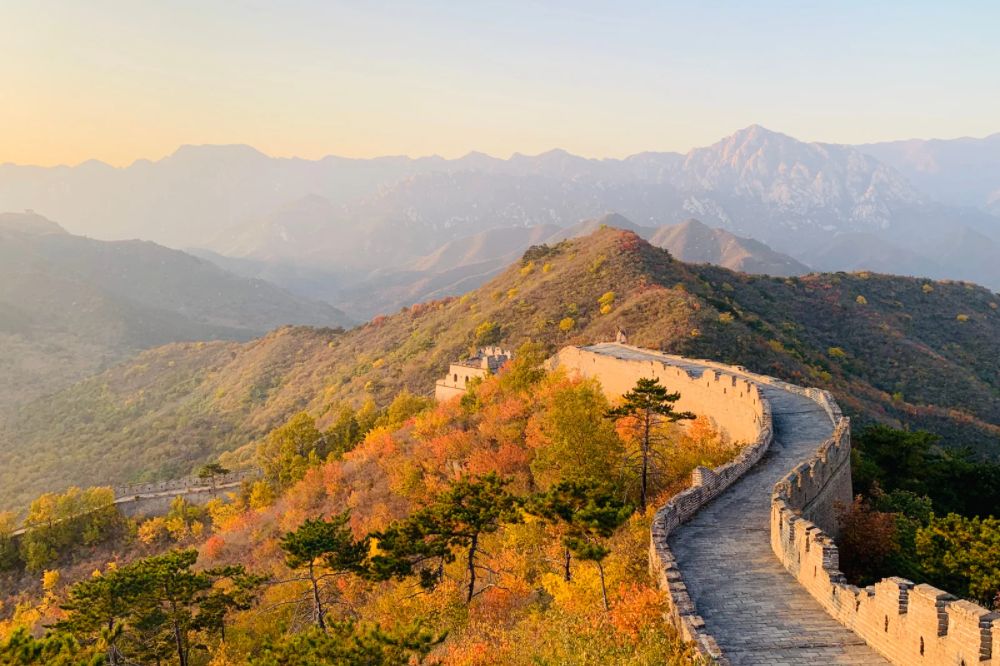
In fact, the Great Wall of China was so much more than I could foresee. It was magnificent. In fact, I truly loved my entire visit to China and highly recommend spending some time there. See the reasons I loved China so much. How much do you know about China?
Learn a few interesting facts about it before you visit! The Great Wall of China is one of the top tourist attractions in the world, drawing more than 10 million visitors from all corners of the globe every year. It’s one of those really cool experiences that everyone should have in their lifetime.
They don’t call it one of the 7 Great Wonders of the World for nothing. Just standing on it, peering out over the vast countryside below, you can almost sense the pride and determination that it took to build it.
You can almost feel the years of toil and anguish the soldiers, convicts and laborers who constructed it must have felt, you can almost see the world in which building something so massive was necessary. It’s a living piece of history that I feel privileged to have walked on.

Table of Contents
How to Walk the Great Wall of China
If you’re wondering can you walk the Great Wall of China, the answer is yes. Of course you can! There are a few sections of the wall that are open to tourists. Where you go depends greatly on what you want to do there and how far you’re willing to go.
Badaling Section
We entered the Great Wall at the Badaling Section, which is both the easiest entrance to get to and the most frequented by tourists. It’s only about 45 miles from Beijing and can be reached by train and bus, if you’re on your own, or with any number of tour companies.
The section of the wall at Badaling is the most well-preserved and stretches some 7.5 miles, though only about 4,000 yards of it are open to the public.
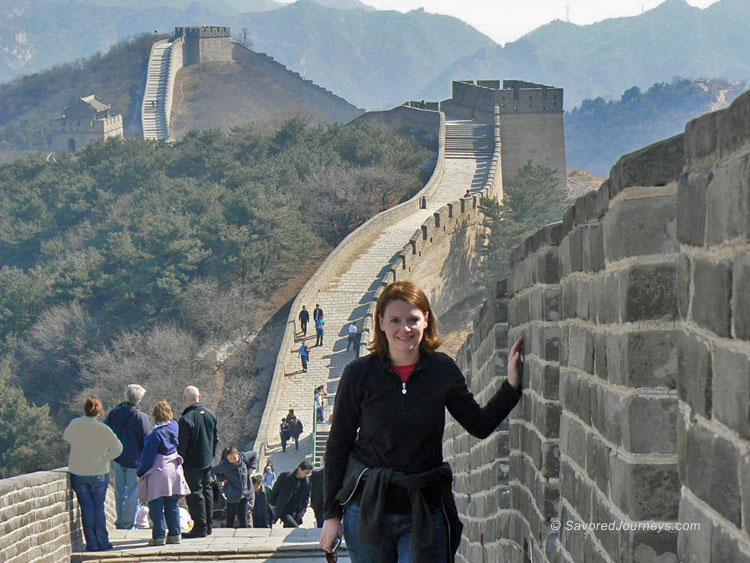
If you’re just wanting to see the wall in as close to original condition as possible, Badaling is the place to go. Other sections of the Great Wall of China are not as well preserved, or have even crumbled out of existence.
There is a group tour you can take from Beijing to the Badaling section of the wall. It’s an 8-hour trip that also includes a visit to the tomb of one of the most important Ming Dynasty emperors. This is a great way to see the wall without needing to do the planning and figuring out of transport on your own.
If you’d rather plan your own trip, but ensure you have a ticket to get in once you arrive, you can buy your Badaling entry ticket here .
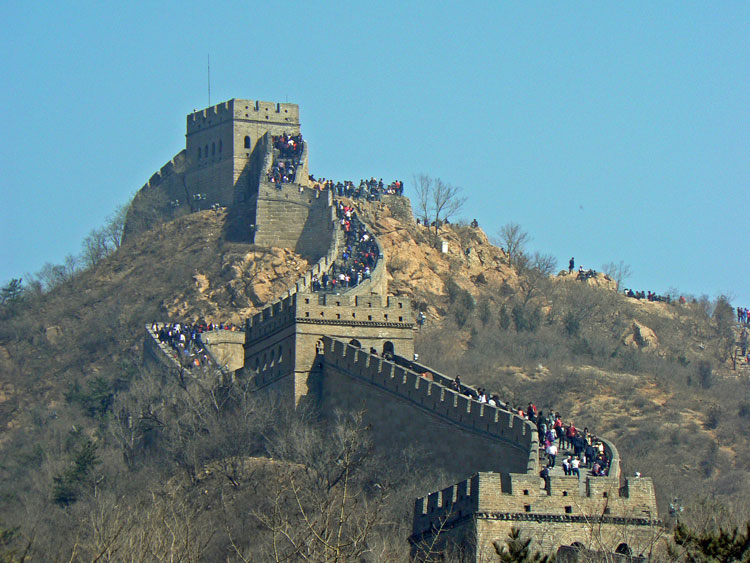
What to Expect
The entrance at Badaling offers very little fanfare. There is a restaurant or two, a couple of souvenir shops, a museum and an exhibit on the Terracotta Warriors (in case you can’t make it all the way to Xian to see them in person).
At the gate, you grab your ticket and decide which side of the wall you wish to walk. We chose the south side, which had less people on it, and I’m really glad we did. We were able to take our time walking up the exceptionally steep inclines, peer over the edges for as long as we wanted and snap some really nice pictures along the way.
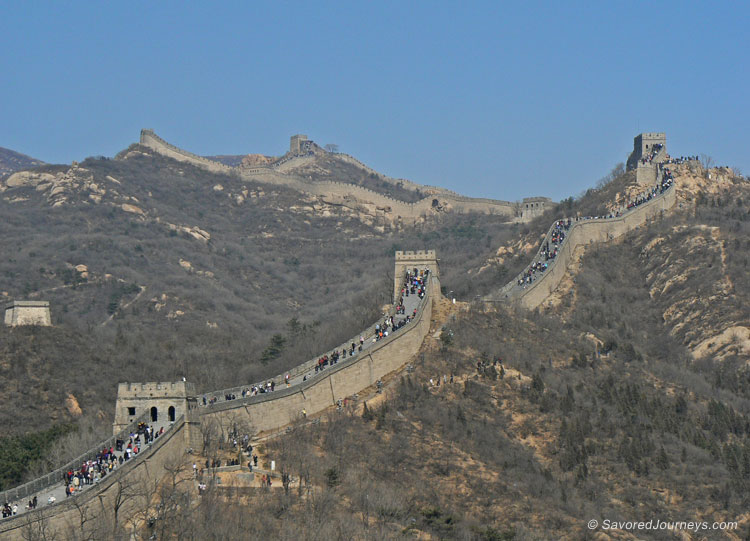
The North route may be more famous or more scenic, but I thought it was nice to take pictures looking to the north rather than walk (or should I say hike) it with the ever-present fear of passing out from lack of oxygen, although they do provide a cable car that will take you to the top, so you don’t have to worry.
The climb at times can be quite arduous and I can only imagine how difficult of a feat it was to build in an era without the help of modern building techniques. I wouldn’t recommend walking it on a rainy or particularly cold day, as you might find yourself landing on your butt more times than you care to.
It’s not only steep, it’s slippery in places where the brick has been warn by the ever-present traipsing of tourists.

On the south side of the wall, there are five towers, from which the rest of the path appears to be draped like streamers for miles in the distance. From afar, it’s quite an incredible view. I imagine that another time of the year would have afforded us the addition of green vegetation or autumn foliage.
But we were there to see the wall, after all, not the trees. There is a cable car at the south side that you can ride to the top, so you don’t need to climb those steep steps. The cost of the cable car is 40 CYN one way or 60 round trip. That is in addition to the 40-45 CYN you must pay to get in.
Mutianyu Section
Mutianyu is a section of the Great Wall of China located in the Huairou District, also about 45 miles to the northeast of the center of the city.
Like Badaling, Mutianyu is also a well preserved section of the wall. It often has less tourists, as well, so you might not see the long lines and crowds you find at Badaling. To reach this section of the wall, you can take the Mubus from the city center that goes directly there or you can book a private tour that includes the wall and Summer Palace. I think this is definitely the way to go!
There’s also a guided tour option to the Jinshaling section that includes transportation and a guided hike from Beijing.

This part of the wall is 3.4 miles in length and it has been renovated, so it’s safe to climb. You can enter at two points – the north and the south. Both require quite a bit of hiking. The cable car is located near the North entrance and should be used by anyone who can’t or doesn’t want to hike.
The cost to get into Mutianyu is around 40 CYN ($5 USD). The cable car costs 100 CYN for adults, 50 CYN for kids. Then you can take a chair lift or a toboggan ride down for the same cost.
When to See the Great Wall of China
I went to the wall in March and the “traffic” wasn’t at all bad. I’ve seen other traveler’s pictures where some parts of the walkway were so packed that it more resembled a crowded nightclub than the great wonder that it should be.
Sharing the wall with all of those people can cheapen the experience and mar any pictures you might take. For that reason I would really suggest visiting the Great Wall of China at a more pleasing (less crowded) time.
Those times are typically in the spring and fall (March-May and Sept-Nov). You can go all year round, though, if your schedule doesn’t allow you to go during the shoulder season.
Final Thoughts on Walking the Great Wall of China
This is definitely one of those experiences you must try in your lifetime. To see the Great Wall of China is a splendid thing that you can only imagine until you see it in person.
There are other ways you can experience the Great Wall of China, like hiking the Great Wall of China and camping out overnight or even running a marathon. If you’re into something alternative, you should look into those options too.
Be Prepared For Travel Planning is the most important part of any successful trip. Do it the easy way:
🧳 Travel Packing List | ✔️ Why You Need Travel Insurance | ✈️ What to Do Before You Leave Home
- Find and book the best hotel (our favorite booking site is Expedia)
- Research flight options (our favorite tool is Skyscanner )
- Book a tour (we always use Viator to find the best tours)
- Rent a car through Discover Cars (they search the best deals for you!)
YOU MIGHT ALSO LIKE

50 Things to Know Before You Go Abroad

12 Exciting Travel Destinations in Asia

21 Top Foodie Destinations Around the World

Top 10 Tibetan Foods You Must Try in Lhasa
Like this post? Why not save it to Pinterest? FOLLOW US on Pinterest , Instagram , Facebook for more great travel inspiration and tips.

Laura Lynch, creator and writer of Savored Journeys, is an avid world traveler, certified wine expert, and international food specialist. She has written about travel and food for over 20 years and has visited over 75 countries. Her work has been published in numerous guidebooks, websites, and magazines.
One thought on “ How to Visit the Great Wall of China ”
Pingback: Why I Travel: The Joys & Benefits of Traveling the World | Savored Journeys
Leave a Reply Cancel reply
Your email address will not be published. Required fields are marked *
Save my name, email, and website in this browser for the next time I comment.
- Travel Resources
20 Dos and Don'ts at the Great Wall of China
The Great Wall of China is the world's longest wall and the biggest ancient architecture. The stunning scenery of the Great Wall attracts millions of travelers from China and abroad, but the masses don't all enjoy their Great Wall experience as much as they could ...
To enjoy a better-than-normal Great Wall trip, China Highlights kindly offers you our best tips , from over 16 years of experience — our Great Wall 10 dos and 10 don'ts.
10 Great Wall Dos
1. DO select the most suitable Great Wall section to visit. See our section comparison to help you make your decision .
2. Do check the weather before departure , and don't hike the Great Wall in bad weather.
3. Do go in spring or fall in good weather. Summer is the peak season with crowds and exhausting heat; winter is less crowded, but dangerously cold.
4. Do take a hiking trip on the wall to appreciate the scenery and get a real feel for this great historical architecture.
5. Do bring water and food if you are planning a long hike on the wall. There are no shops on the wall, and restaurants are way down in the valleys.
6. Do prepare well for hiking — take walking poles, hiking boots, windbreakers, sun protection (sunscreen, hat, sunglasses), waterproofs etc. as necessary.
7. Do experience the toboggan slide way to descend the Great Wall if you visit Badaling or Mutianyu — especially if with kids.
8. Do visit Badaling, Juyongguan, or Mutianyu if you have mobility issues. These Great Wall sections are (more) wheelchair-friendly. Badaling and Mutianyu have (fairly disability-friendly) cable cars up to the wall.
9. Do pay attention to your steps — be careful of slips, trips, and falls — and loose rocks/bricks at wild Great Wall sections.
10. Do bring toilet paper and use the valley restrooms before ascending the Great Wall, since there are no toilets on the wall.
- 1-Day Beijing Layover Tour
- 1-Day Jiankou to Mutianyu Great Wall Hiking Tour
- 2-Day Huanghuacheng Lakeside Great Wall Hiking and Camping Tour
10 Great Wall Don'ts
1. Don't wear open-toed shoes to hike the Great Wall, even in hot summer — protect your toes!
2. Don't camp on the Great Wall , as it is dangerous/uncomfortable in inclement weather, and carrying lots of extra weight will dampen your hiking experience. Besides, this activity is not allowed in most places adjacent to the Great Wall. See Where to Stay Near the Great Wall .
3. Don't be fooled by tourist traps — the "Great Wall" group tours offered by drivers or "tour guides" by the road. They may take you for a quick and low-quality visit to a Great Wall section you didn't ask for, with a long and tiresome round of commission earning stops.
4. Don't go alone to the wild Great Wall. Travel with friends to help one another, and find a professional guide to facilitate access and prevent getting lost.
5. Don't take photos from unsafe positions — first get a secure footing, and don't move about if you're standing near steep drops or loose rocks/bricks. Don't damage your camera, or yourself!
6. Don't visit the (popular sections of) Great Wall on weekends or Chinese holidays (in peak season). It can be extremely crowded at sections like Badaling.
7. Don't leave rubbish on the Great Wall or on the mountains. Keep the wall clean, and then other travelers can enjoy the scenery.
8. Don't climb on the windows of watchtowers , especially unrestored ones that might collapse.
9. Don't run or walk too fast along the wall , especially when descending. Some bricks and stones might have loosened.
10. Don't expect too much of the facilities , especially at less-traveled sections: Jiankou, Gubeikou, etc.
- 1-Day Beijing Highlights Private Tour
- 1-Day Jinshanling Great Wall Hiking Tour
More Useful Information You Should See
- Best Times to Visit the Great Wall
- 10 Top FAQs about the Great Wall
- The Cultural Background of the Great Wall
The Most Popular Great Wall Tours
If you are planning a Great Wall tour, see our guide to how to plan a Great Wall tour . Or see our recommended tours for inspiration:
- 1-Day Beijing Highlights Tour to the Forbidden City and the Great Wall
- 4-Day Essence of Beijing Tour with the Great Wall
- 4-Day Jiankou to Simatai West Great Wall Hiking Tour
Or we can tailor-make a Great Wall tour according to your requirements .
- 2-Day Jiankou Wild Great Wall Camping Tour
Get Inspired with Some Popular Itineraries
More travel ideas and inspiration, sign up to our newsletter.
Be the first to receive exciting updates, exclusive promotions, and valuable travel tips from our team of experts.
Why China Highlights
Where can we take you today.
- Southeast Asia
- Japan, South Korea
- India, Nepal, Bhutan, and Sri lanka
- Central Asia
- Middle East
- African Safari
- Travel Agents
- Loyalty & Referral Program
- Privacy Policy
Address: Building 6, Chuangyi Business Park, 70 Qilidian Road, Guilin, Guangxi, 541004, China
ENCYCLOPEDIC ENTRY
The great wall of china.
The Great Wall of China was built over centuries by China’s emperors to protect their territory. Today, it stretches for thousands of miles along China’s historic northern border.
Anthropology, Geography, Human Geography, Social Studies, Ancient Civilizations, World History
The Great Wall of China is one of the most notorious structures in the entire world. The Jinshanling section in Hebei Province, China, pictured here, is only a small part of the wall that stretches over 4,000 kilometers (2,500 miles).
Photograph by Hung Chung Chih
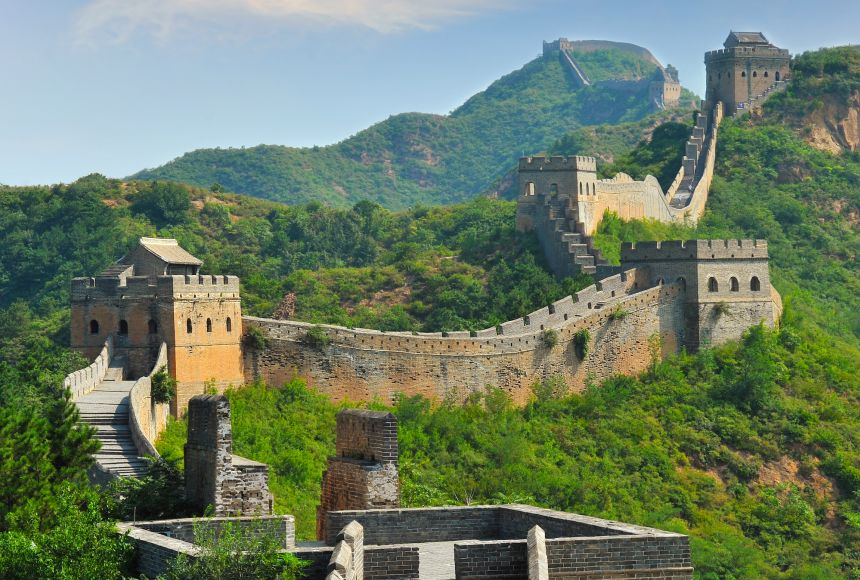
The one thing most people “know” about the Great Wall of China—that it is one of the only man-made structures visible from space—is not actually true. Since the wall looks a lot like the stone and soil that surround it, it is difficult to discern with the human eye even from low Earth orbit, and is difficult to make out in most orbital photos . However, this does not detract from the wonder of this astounding ancient structure.
For millennia, Chinese leaders instituted wall-building projects to protect the land from northern, nomadic invaders. One surviving section of such an ancient wall, in the Shandong province, is made of hard-packed soil called “ rammed earth ” and is estimated to be 2,500 years old. For centuries during the Warring States Period, before China was unified into one nation, such walls defended the borders.
Around 220 B.C.E., Qin Shi Huang, also called the First Emperor , united China. He masterminded the process of uniting the existing walls into one. At that time, rammed earth and wood made up most of the wall. Emperor after emperor strengthened and extended the wall, often with the aim of keeping out the northern invaders. In some places, the wall was constructed of brick. Elsewhere, quarried granite or even marble blocks were used. The wall was continuously brought up to date as building techniques advanced.
Zhu Yuanzhang, who became the Hongwu Emperor , took power in 1368 C.E. He founded the Ming Dynasty , famous for its achievements in the arts of ceramics and painting. The Ming emperors improved the wall with watchtowers and platforms. Most of the familiar images of the wall show Ming-era construction in the stone. Depending on how the wall is measured, it stretches somewhere between 4,000 and 5,500 kilometers (2,500 and 3,400 miles).
In the 17th century, the Manchu emperors extended Chinese rule into Inner Mongolia, making the wall less important as a defense. However, it has retained its importance as a symbol of Chinese identity and culture . Countless visitors view the wall every year. It may not be clearly visible from space, but it is considered “an absolute masterpiece” here on Earth.
Media Credits
The audio, illustrations, photos, and videos are credited beneath the media asset, except for promotional images, which generally link to another page that contains the media credit. The Rights Holder for media is the person or group credited.
Production Manager
Program specialists, specialist, content production, last updated.
October 19, 2023
User Permissions
For information on user permissions, please read our Terms of Service. If you have questions about how to cite anything on our website in your project or classroom presentation, please contact your teacher. They will best know the preferred format. When you reach out to them, you will need the page title, URL, and the date you accessed the resource.
If a media asset is downloadable, a download button appears in the corner of the media viewer. If no button appears, you cannot download or save the media.
Text on this page is printable and can be used according to our Terms of Service .
Interactives
Any interactives on this page can only be played while you are visiting our website. You cannot download interactives.
Related Resources
Winter is here! Check out the winter wonderlands at these 5 amazing winter destinations in Montana
- Travel Destinations
Why Is The Great Wall Of China A Tourist Attraction
Published: November 7, 2023
Modified: December 28, 2023
by Cleopatra Fleischman
- Arts & Culture
- Plan Your Trip
Introduction
The Great Wall of China, one of the most iconic and impressive structures ever built, stands as a testament to the ingenuity and ambition of the ancient Chinese civilization. Stretching over 13,000 miles, this architectural marvel traverses diverse terrains, from rugged mountains to vast plains, and holds immense historical and cultural significance.
The Great Wall of China was originally constructed as a defensive fortification to protect China from nomadic tribes and potential invasions. Its construction began as early as the 7th century BC and continued for centuries under different dynasties. The wall consists of various sections, each built during different time periods and using different materials.
Today, the Great Wall of China has become a major tourist attraction, drawing millions of visitors from around the world. Its sheer size, historical significance, and breathtaking views have made it an enduring symbol of Chinese civilization and a UNESCO World Heritage site.
Aside from its historical and cultural significance, the Great Wall of China offers visitors a chance to experience the architectural wonders of ancient China. From the imposing watchtowers to the steep steps and winding paths, every section of the wall showcases the remarkable engineering skills of the people who built it.
This article will delve into the historical background, architectural features, and significance of the Great Wall of China. We will also explore the factors contributing to its popularity as a tourist attraction, the challenges it faces, and the preservation efforts being undertaken to safeguard this magnificent wonder.
Historical Background of the Great Wall of China
The origins of the Great Wall of China can be traced back to the Warring States Period (476-221 BC) when various Chinese states built walls to defend their territories. However, it was during the Qin Dynasty (221-206 BC) that the first unified and continuous wall was constructed. This early version of the wall served as a defense against attacks from the northern nomadic tribes.
Over the centuries, different dynasties, including the Han, Sui, and Ming, contributed to the construction, expansion, and reinforcement of the wall. The Han Dynasty (206 BC-220 AD) extended the wall further west to protect important trade routes, while the Sui Dynasty (581-618 AD) repaired and reinforced existing sections. However, it was the Ming Dynasty (1368-1644 AD) that extensively rebuilt and expanded the Great Wall to its current form.
During the Ming Dynasty, the Great Wall reached its peak as a defensive structure. It was constructed using bricks, stones, and rammed earth, with watchtowers strategically placed along its length. These watchtowers provided lookout points and fortified positions for soldiers.
While the primary purpose of the Great Wall was defense against invaders, it also served as a symbolic display of imperial power and national unity. The wall symbolized the strength and greatness of the Chinese empire, reinforcing the metaphorical notion that China was an impregnable fortress.
Despite the incredible scale and effort put into the construction of the Great Wall, it was not entirely effective in keeping out invaders. In fact, numerous breaches and invasions occurred over the centuries. However, the wall served as a deterrent and made it more challenging for invaders to breach China’s borders.
Today, the Great Wall of China stands as a testament to the rich history and perseverance of the Chinese people. It reflects their determination to protect their land and preserve their cultural identity amidst external threats. It also stands as a reminder of the incredible engineering achievements of ancient civilizations, captivating visitors with its historical significance and architectural grandeur.
Architectural Features of the Great Wall of China
The Great Wall of China is a remarkable testament to the architectural brilliance of ancient China. Its construction, spanning centuries and different dynasties, showcases a variety of architectural features and techniques. Here are some notable features of the Great Wall:
- Materials: The construction of the Great Wall utilized a variety of materials, depending on the availability in each region. The most common materials include stones, bricks, and rammed earth. In some sections, layers of tamped earth, reeds, and wooden frames were used to strengthen the structure.
- Watchtowers: Distributed along the length of the wall, watchtowers served as strategic strongholds and observation posts. These towers allowed soldiers to survey the surrounding areas, spot potential threats, and communicate using smoke signals or lanterns. The design of the watchtowers varied across different sections of the wall and often incorporated intricate features and decorative elements.
- Fortresses: In addition to the watchtowers, the Great Wall also housed numerous fortresses at key points. These fortresses provided additional defense and acted as military bases. They were equipped with barracks, stables, wells, and other necessary facilities to sustain soldiers stationed along the wall.
- Gateways and Passes: The Great Wall featured gateways and passes at strategic locations that allowed for controlled access and movement. These gateways were fortified with additional defensive structures, such as barbicans and drawbridges, to enhance security.
- Steep Grades and Steps: Due to the varying terrains it crossed, the Great Wall often traverses steep mountain slopes. To ensure stability and ease of movement, sections of the wall employ steps or inclines. The steps are of varying heights and widths, making the ascent challenging but manageable for both soldiers and visitors.
The architectural features of the Great Wall of China not only served defensive purposes but also exhibited the artistic and aesthetic sensibilities of the builders. The integration of functional elements with decorative elements, such as intricate carvings, ornamental patterns, and inscriptions, showcases the skill and craftsmanship of ancient Chinese architects.
Exploring the Great Wall allows visitors to appreciate the remarkable engineering and architectural marvel that has stood the test of time. From the imposing walls to the watchtowers and fortresses, each section offers a unique glimpse into ancient China’s ingenuity and dedication to protecting its borders.
Significance and Symbolism of the Great Wall of China
The Great Wall of China holds immense historical, cultural, and symbolic significance for the Chinese people. It is not merely a physical barrier but a powerful symbol of unity, national identity, and an enduring testament to human perseverance. Here are some of the key aspects of its significance and symbolism:
- Defense and Protection: The primary purpose of the Great Wall was to defend China against invasions by nomadic tribes from the north. As a result, it played a crucial role in safeguarding the country’s territorial integrity and sovereignty. The wall represented a physical and psychological barrier that deterred potential invaders, fostering a sense of security among the Chinese population.
- Chinese Civilizational Achievement: The construction of the Great Wall exemplifies the remarkable engineering and architectural prowess of ancient China. It stands as a testament to the country’s rich history and the ingenuity of its people. As an architectural marvel, the Great Wall showcases the technological advancements and the immense effort put into its construction, solidifying China’s position as a great civilization.
- Unity and National Identity: The Great Wall has served as a unifying symbol for the Chinese people throughout history. It has played a vital role in fostering a sense of national identity, pride, and resilience. The wall’s construction involved the collective effort and sacrifice of countless individuals, representing the strength that lies in unity and cooperation.
- Cultural Icon and Tourist Attraction: The Great Wall of China has transcended its original purpose and has become an iconic symbol of China. It is a source of inspiration for artists, writers, and poets who have praised its magnificence and grandeur. The wall’s historical and cultural significance attracts millions of tourists from around the world each year, eager to witness this extraordinary feat of human achievement.
- Metaphorical Representation: Beyond its physical presence, the Great Wall holds metaphorical significance. It represents the indomitable spirit and resilience of the Chinese people in the face of adversity. It symbolizes their determination to protect their homeland, preserve their cultural heritage, and withstand external challenges.
The Great Wall of China has left an indelible mark on Chinese history, culture, and national psyche. It continues to inspire awe and admiration, serving as a reminder of the remarkable achievements of the past and the enduring legacy of the Chinese civilization. Whether admired for its historical significance, architectural brilliance, or symbolic representation, the Great Wall remains an iconic symbol of pride, unity, and national heritage for the Chinese people.
Tourism and the Great Wall of China
The Great Wall of China has become one of the most popular tourist destinations in the world, attracting millions of visitors from all corners of the globe. Its historical significance, architectural splendor, and breathtaking views make it an irresistible attraction for travelers. Here are some key factors that contribute to the appeal of the Great Wall as a tourist destination:
- Historical and Cultural Significance: The Great Wall of China is steeped in history and culture. Visiting the wall allows tourists to immerse themselves in the rich heritage and ancient civilization of China. It provides a unique opportunity to learn about the country’s dynasties, conflicts, and the enduring spirit of its people.
- Architectural Marvel: The Great Wall’s monumental architecture and engineering brilliance captivate the imagination of visitors. Exploring its winding paths, climbing its steep steps, and marveling at the watchtowers reveal the skill and craftsmanship of ancient Chinese builders. The sheer scale and complexity of the wall leave tourists in awe of the human achievement it represents.
- Picturesque Landscapes: Stretching through diverse terrains, the Great Wall offers breathtaking and varied landscapes. From panoramic mountain views to sweeping vistas of lush valleys, each section of the wall provides a unique and picturesque experience. The beauty of the natural surroundings enhances the allure of the Great Wall as a tourist destination.
- Trekking and Hiking Opportunities: The Great Wall presents abundant trekking and hiking opportunities for adventure enthusiasts. Whether it’s a leisurely stroll along restored sections or a challenging hike across wild and rugged terrain, the wall offers unforgettable experiences for those seeking outdoor activities and a connection with nature.
- Cultural Exchange: The Great Wall serves as a bridge for cultural exchange. Visitors from different countries and backgrounds come together to explore its wonders, share stories, and learn from each other. The wall has become a meeting point for people from around the world, fostering an environment of cultural understanding and appreciation.
- Photographic Opportunities: The Great Wall offers countless opportunities for stunning photographs. From panoramic shots of the winding wall disappearing into the horizon to close-ups of ancient bricks and intricate watchtowers, the visual appeal of the Great Wall provides photographers with a wealth of subject matter to capture.
With its historical significance, architectural marvels, breathtaking landscapes, and cultural exchange opportunities, the Great Wall of China has firmly established itself as a must-visit destination for travelers. It offers a captivating experience that combines exploration, adventure, and a deep appreciation for the grandeur of Chinese history and culture.
Factors Contributing to the Great Wall’s Popularity as a Tourist Attraction
The Great Wall of China’s popularity as a tourist attraction can be attributed to a combination of factors that make it a unique and captivating destination. From its historical significance to its architectural grandeur, here are some key factors that contribute to the Great Wall’s popularity:
- Historical Significance: The Great Wall holds immense historical value, spanning over centuries and representing the rich legacy of Chinese civilization. It is renowned for its role in defending the nation and its cultural symbolism, making it a remarkable destination for history enthusiasts.
- Architectural Marvel: The Great Wall’s grand and intricate architecture is awe-inspiring to visitors. Its imposing watchtowers, steep steps, and fortified walls showcase the incredible engineering achievements of the ancient Chinese. Tourists are drawn to witness and marvel at the scale and craftsmanship of this monumental structure.
- UNESCO World Heritage Status: The Great Wall of China has been recognized as a UNESCO World Heritage site since 1987. This designation adds to its appeal, as it highlights the wall’s universal value and the need for its preservation. Tourists are often inclined to visit heritage sites of global importance.
- Scenic Beauty: The Great Wall traverses diverse landscapes, offering breathtaking views of mountains, valleys, and picturesque countryside. This natural beauty enhances the overall experience for visitors and makes it an ideal destination for photography and outdoor enthusiasts.
- Cultural Immersion: Visiting the Great Wall allows tourists to immerse themselves in Chinese culture and history. They can learn about the customs, traditions, and beliefs associated with the wall. Interacting with local communities and participating in cultural activities further enriches the experience.
- Accessibility and Infrastructure: The Great Wall’s popularity is also inherently linked to the accessibility and infrastructure available to tourists. Many sections of the wall, such as Badaling and Mutianyu, have been restored and developed with visitor facilities like cable cars, shops, and restaurants, making it easier and more comfortable for tourists to explore.
- Media Exposure: The Great Wall has received significant media exposure over the years, featuring prominently in films, documentaries, and travel shows. This exposure has helped to create awareness and generate interest among potential visitors, driving its popularity as a tourist attraction.
The combination of historical significance, architectural splendor, scenic beauty, cultural immersion, accessibility, and media exposure contribute to the Great Wall of China’s enduring popularity as a must-visit tourist attraction. Its universal appeal as an iconic symbol of Chinese history and culture continues to draw millions of visitors from around the world each year.
Challenges and Preservation Efforts for the Great Wall of China
Ensuring the long-term preservation of the Great Wall of China presents several challenges due to its immense size, age, and exposure to natural and human-related factors. Here are some of the significant challenges and the ongoing preservation efforts:
- Deterioration and Weathering: The Great Wall is over 2,000 years old and has faced extensive weathering and natural deterioration. Harsh weather conditions, including extreme temperatures, rainfall, and wind erosion, contribute to the degradation of the wall’s structural integrity.
- Tourism Impact: The high volume of tourists visiting the Great Wall can also pose challenges to its preservation. Foot traffic, littering, and unauthorized modifications can cause damage to the walls and surrounding areas. Preservation efforts must strike a balance between promoting tourism and protecting the wall.
- Illegal Construction and Quarrying: Illegal construction and quarrying activities near the Great Wall pose a threat to its preservation. Encroachments on its lands, unauthorized mining, and the extraction of materials from the wall can compromise its integrity and historical value.
- Lack of Funding: Preserving the Great Wall requires significant financial resources. However, limited funding presents a challenge to its maintenance, restoration, and research. Securing sustainable funding for preservation and conservation projects remains a continuous challenge.
- Fragmentation and Lost Sections: Over time, sections of the Great Wall have been lost due to neglect, natural disasters, and human activities. Fragmentation poses a challenge to preserving the wall’s integrity and historical continuity. Efforts are being made to locate and restore these lost sections.
- Conservation and Restoration: Preservation efforts involve conservation and restoration work to maintain and repair damaged sections of the wall. This includes stabilizing foundations, replacing missing or decayed bricks, and preventing further deterioration caused by weathering and human activities.
- Education and Awareness: Raising awareness about the importance of preserving the Great Wall is crucial. Educating visitors, local communities, and future generations about the historical and cultural significance of the wall helps foster a sense of responsibility for its preservation.
- Collaboration and Monitoring: Collaborative efforts between government authorities, conservation organizations, researchers, and local communities are vital for the preservation of the Great Wall. Regular monitoring and assessments ensure appropriate measures are in place to protect and preserve this cultural heritage site.
Preserving the Great Wall of China is an ongoing endeavor that requires a combination of research, funding, conservation practices, and public involvement. With concerted efforts, diligent monitoring, and strategic preservation initiatives, it is possible to safeguard this iconic symbol of human ingenuity and Chinese cultural heritage for future generations to admire and appreciate.
The Great Wall of China stands as a magnificent testament to the rich history, culture, and architectural brilliance of ancient China. Its towering walls, grand watchtowers, and expansive landscapes have captivated the imaginations of people around the world for centuries. The Great Wall holds immense historical and cultural significance, representing the resilience, unity, and ingenuity of the Chinese civilization.
As a major tourist attraction, the Great Wall offers visitors a unique opportunity to immerse themselves in the rich tapestry of Chinese history and culture. Its historical significance, architectural marvels, and scenic beauty continue to attract millions of visitors each year. The wall’s popularity is a testament to its universal value as a symbol of human achievement and cultural heritage.
Despite its popularity, the Great Wall faces various challenges that threaten its preservation and integrity. Deterioration, tourism impact, illegal activities, lack of funding, and lost sections pose ongoing challenges that must be addressed through collaborative efforts and strategic preservation initiatives.
Preservation efforts for the Great Wall encompass conservation, restoration, education, and awareness. By raising awareness about its significance, implementing conservation practices, and securing sustainable funding, it is possible to protect the Great Wall for future generations to behold and appreciate.
The Great Wall of China stands as a testament to the enduring legacy of human achievement and the cultural richness of ancient China. It serves as a reminder of the importance of preserving our historical and architectural heritage. With continued efforts and attention, we can ensure that this awe-inspiring wonder remains a symbol of Chinese history and a source of inspiration for generations to come.

- Privacy Overview
- Strictly Necessary Cookies
This website uses cookies so that we can provide you with the best user experience possible. Cookie information is stored in your browser and performs functions such as recognising you when you return to our website and helping our team to understand which sections of the website you find most interesting and useful.
Strictly Necessary Cookie should be enabled at all times so that we can save your preferences for cookie settings.
If you disable this cookie, we will not be able to save your preferences. This means that every time you visit this website you will need to enable or disable cookies again.

IMAGES
VIDEO
COMMENTS
A Complete Guide to Visiting the Great Wall of China. The Great Wall of China stretches 13,000 miles over mountains, forests, reservoirs, and desert. It took a millennium to build, involved multiple dynasties, and pissed off a lot of Huns. Inextricably tied to the history of the country, to visit China without seeing it would cause you to be ...
Though the Great Wall is over 6,000 kilometers long, the best 10 sections to visit are around Beijing's north and east: 1) the best-restored, Mutianyu, 2) the most beautiful, Jinshanling, 3) the wildest, Jiankou, 4) Simatai, 5) Huanghuacheng, 6) Gubeikou, 7) Juyongguan, 8) Huangyaguan, 9) Shanhaiguan, and by far the most crowded 10) Badaling. (We list the top 10 below in order of ...
It takes only about 2.5 hours to get to the entrance of Jinshanling section of Great Wall. - By Bus: There are usually 4 daily tourist buses running from Dongzhimen Wai Bus Station (东直门外站) for Jinshanling Great Wall, but only operating during April ~ October. It takes about 3 hours to get to Jinshanling.
As China's most famous attraction, the Great Wall of China is an essential stop on all China tours.Commonly considered a wonder of the world, the Great Wall boasts a history of over 2,000 years and stretches more than 3,000 miles across several provinces of northern China, making it one of the most impressive ancient structures on the planet.
Getty Images/Blend Images. The Great Wall of China is a perfect day trip for travelers based in Beijing. "Most clients do one day at the Great Wall as part of a visit to Beijing," explained ...
See China's Iconic Great Wall From Above. ... (43° to 64°F/6° to 18°C) and reduced tourist crowds. Wind and dust can be common in springtime. China is a nation of festivals, so consider ...
There are more than 10 sections of Great Wall located in the northern area about 60~160km from central Beijing. Mutianyu is the best option if you travel with kids, or want to enjoy a leisure and scenic hike. If you are a hiker, choose 1 or 2 sections among Jinshanling, Simatai and Gubekou to hike 1 or 2 days.
To get the most from the Great Wall, a must-visit China attraction, you should follow the advice to plan a perfect Great Wall trip: 1. Choose the Best Times to Visit. 2. Select the MOST Suitable Section to Visit. 3.
The building methods of the Great Wall in different times and places have been integrally maintained, while the unparalleled national and cultural significance of the Great Wall to China is still recognised today. The visual integrity of the Wall at Badaling has been impacted negatively by construction of tourist facilities and a cable car.
China, Asia. Coiling its way through 23 degrees of longitude, the Great Wall (长城, Chángchéng) stands as an awe-inspiring monument to the grandeur of China's ancient history. With sections dating back 2000 years, the wall (or, more accurately, walls, because they belong to several different eras) wriggle haphazardly from their scattered ...
The Great Wall of China, the largest man-made project in the world, is a series of ancient fortifications built in northern China. Although named the 'wall', it is an integrated defense system including not only lofty and solid walls, but also massive signal towers, barriers, barracks, garrison stations, and fortresses along the walls, together forming an insurmountable line, for thousands of ...
The Great Wall of China is one of the greatest sights in the world. A Great Wall tour is a must for most first China trips. Along this super-long wall, Beijing is the top destination for seeing well-maintained and abundant Great Wall relics of the Ming Dynasty (1368-1644).There are eight sections close to Beijing: Badaling, Mutianyu, Jinshanling, Jiankou, Simatai...
The Great Wall of China (traditional Chinese: 萬里長城; simplified Chinese: 万里长城; pinyin: Wànlǐ Chángchéng, literally "ten thousand li long wall") is a series of fortifications that were built across the historical northern borders of ancient Chinese states and Imperial China as protection against various nomadic groups from the Eurasian Steppe.
10. It is Chinese people's greatest cultural icon. The Great Wall is the product of countless labors over a period of 2,000 years, and is a feast of engineering. It also reflected the collision and exchanges between the agricultural and nomadic civilizations. In the Yuan Dynasty (1272-1368), the Juyong Pass functioned as a major traffic artery ...
The best-known section of the Great Wall of China—Badaling, located 43 miles (70 km) northwest of Beijing—was rebuilt in the late 1950s, and attracts thousands of national and foreign tourists ...
6 Things to Do on Mutianyu Great Wall of China. - Last updated on Jan. 03, 2024 by Brenda Lian -. 6 best places to see Great Wall of China are Mutianyu, Badaling, Simatai, Jinshanling and Jiankou in Beijing; and Gansu for Jiayuguan, Yumenguan and Dunhuang Great Wall.
Prices can vary depending on what time of year you visit. During the summer, entrance fees range from 40-65 Yuan (£4.35-£6.52), but from November to March prices drop to 35-55 Yuan (£3.80-£6.00). If you book a private Great Wall of China tour, the cost of entry is normally included in the price.
There's also a guided tour option to the Jinshaling section that includes transportation and a guided hike from Beijing. This part of the wall is 3.4 miles in length and it has been renovated, so it's safe to climb. You can enter at two points - the north and the south. Both require quite a bit of hiking.
6. Don't visit the (popular sections of) Great Wall on weekends or Chinese holidays (in peak season). It can be extremely crowded at sections like Badaling. 7. Don't leave rubbish on the Great Wall or on the mountains. Keep the wall clean, and then other travelers can enjoy the scenery. 8.
The Great Wall of China is one of the most notorious structures in the entire world. The Jinshanling section in Hebei Province, China, pictured here, is only a small part of the wall that stretches over 4,000 kilometers (2,500 miles). The one thing most people "know" about the Great Wall of China—that it is one of the only man-made ...
Great Wall of China, extensive bulwark erected in ancient China, one of the largest building-construction projects ever undertaken.The Great Wall actually consists of numerous walls—many of them parallel to each other—built over some two millennia across northern China and southern Mongolia.The most extensive and best-preserved version of the wall dates from the Ming dynasty (1368-1644 ...
Dong Yao-hui has spent the last three decades protecting and promoting China's Great Wall. Harry Forbes. "It was the first time ever for humans to go on an expedition of the entire Great Wall ...
The Great Wall holds immense historical and cultural significance, representing the resilience, unity, and ingenuity of the Chinese civilization. As a major tourist attraction, the Great Wall offers visitors a unique opportunity to immerse themselves in the rich tapestry of Chinese history and culture. Its historical significance, architectural ...